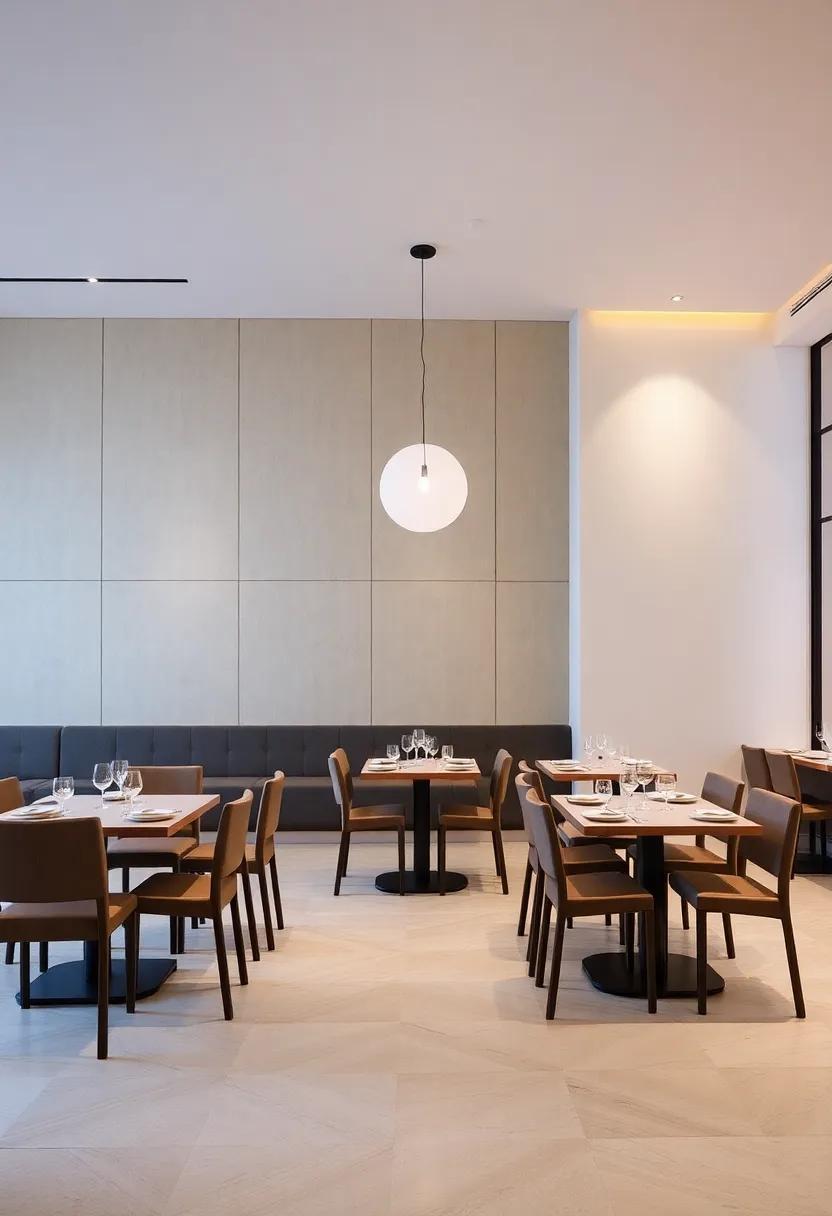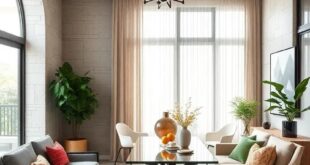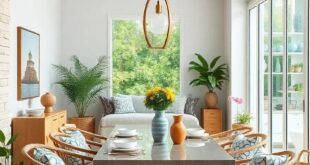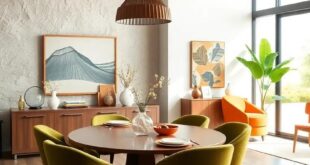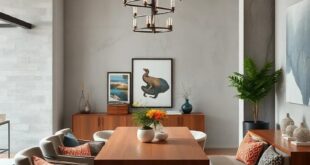In an age where space is often at a premium, the need for innovative design solutions has never been more pressing. Enter the multi-functional dining area—a space that transcends the customary boundaries of mealtime gathering, evolving into a versatile hub for social interaction, work, adn creativity. As our lifestyles become increasingly dynamic, the ability to adapt our living environments to meet diverse needs is paramount. This article delves into the art of designing these transformative spaces, exploring how thoughtful planning and creative design can harmonize aesthetics and functionality. From cozy nooks that double as productivity zones to expansive tables that invite both family dinners and impromptu gatherings, join us as we uncover the principles and inspirations that can turn any dining area into a multifunctional masterpiece.
Transforming Open Spaces Into Inviting Dining Areas With versatile Furniture Arrangements

Transforming open spaces for dining requires a blend of creativity and practicality. By utilizing flexible furniture arrangements, you can create an inviting atmosphere that adjusts to various needs, whether it’s a casual brunch or an elegant evening dinner. Consider incorporating multi-functional pieces such as extendable tables, which can expand to accommodate extra guests or retract for intimate gatherings. Pair these with portable seating options like stools and benches, which can easily be moved around or tucked away when not in use. This versatility allows for easy reconfiguration, ensuring that your dining area suits any occasion while maximizing the potential of your outdoor space.
In addition to furniture choice, the interplay of lighting and greenery enhances the dining experience. String lights or decorative lanterns can set the mood while emphasizing the charm of the surrounding surroundings. Incorporating plants not only adds color and texture but can also serve practical purposes, such as providing privacy or shielding from wind. To illustrate the effectiveness of furniture arrangements and décor elements, consider the following layout options:
| Layout Type | Description | Ideal Occasions |
|---|---|---|
| Traditional Long Table | Classic arrangement that encourages conversation. | family gatherings, holiday celebrations. |
| casual Circle | Encourages relaxed dining with friends. | Weekend brunch, casual barbecues. |
| Mixed Seating | Combines chairs and benches for a diverse aesthetic. | Outdoor dinner parties, receptions. |
Embracing Color Palettes That Evoke Warmth And Invite Conversation In Dining Spaces
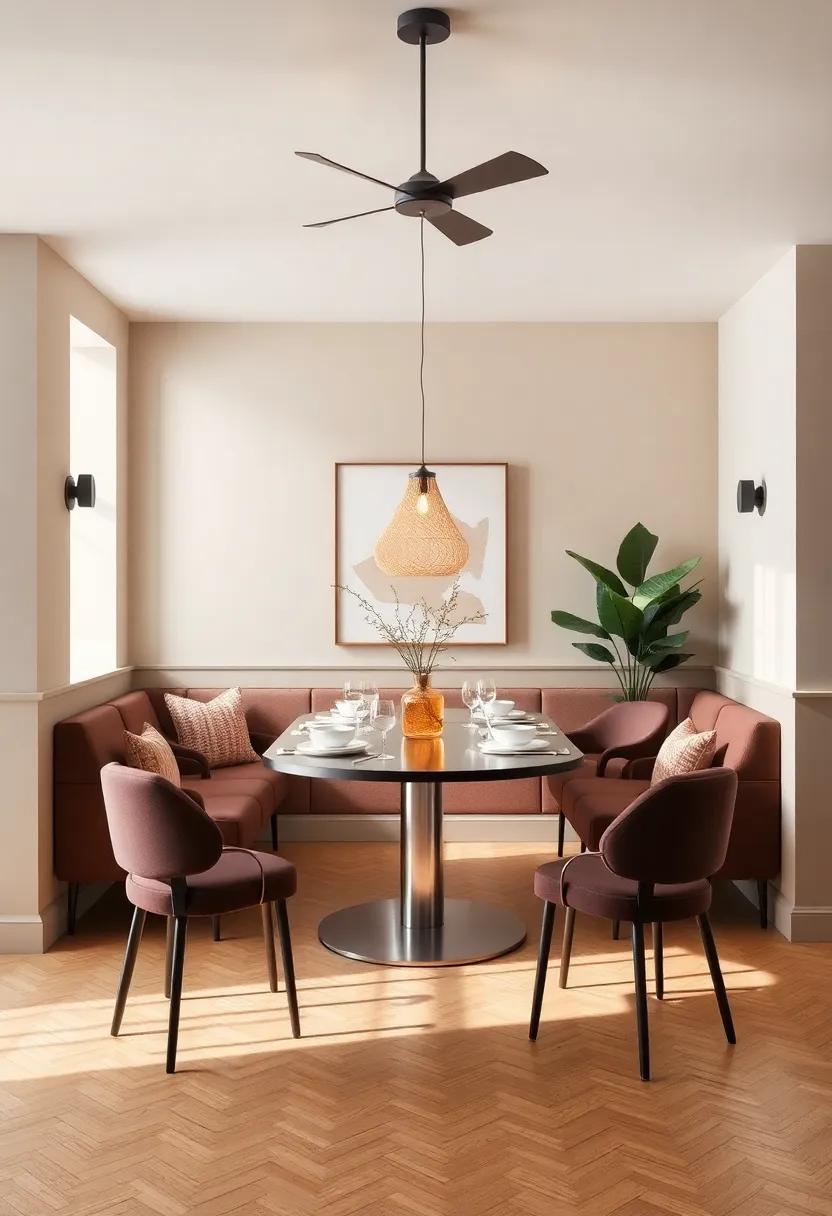
Creating a dining area that sparks conversation and exudes warmth begins with thoughtfully chosen color palettes. Rich, earthy tones such as terracotta, deep greens, and warm browns can transform an ordinary dining space into a cozy retreat. These hues not only create an inviting atmosphere but also stimulate the senses, encouraging guests to linger longer. When incorporating these colors, consider pairing them with softer accents like cream or light beige to balance intensity, allowing the vibrant shades to shine while ensuring the space remains pleasant and approachable.
Another effective approach is to integrate color accents that reflect personal style and resonate with the overall theme of the home.Think about incorporating colors through:
- Tableware: Vibrant dishes or placemats that can be easily swapped out.
- Wall Art: pieces that incorporate a splash of color and stimulate visual interest.
- floral Arrangements: Seasonal blooms that bring a touch of nature indoors.
Additionally,consider the impact of lighting on your palette. Warm, ambient lighting can enhance the chosen colors, creating a dynamic and inviting space that encourages engagement. Whether through a statement chandelier or soft recessed lighting, the illumination should complement the color scheme, making the dining area a true focal point in your home.
Incorporating Nature: The Impact of Plants and Natural Light in Dining Areas
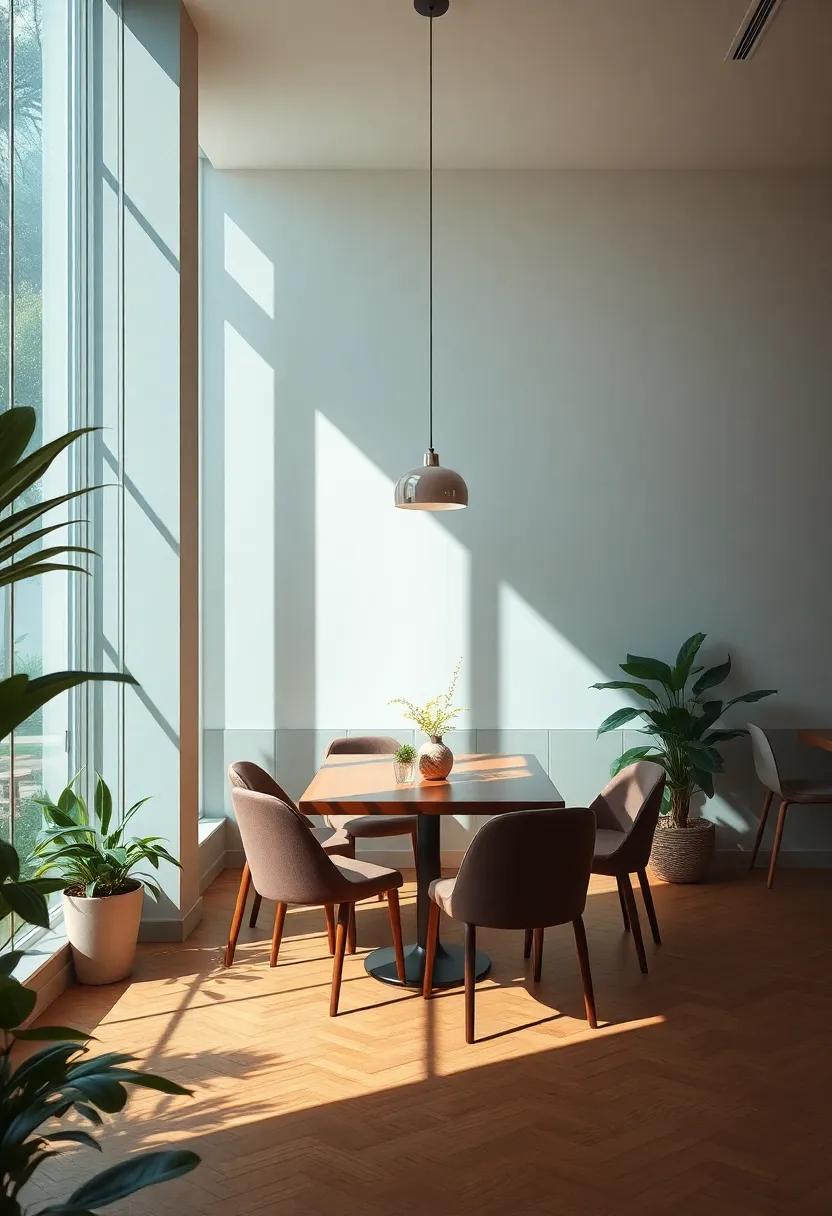
integrating flora into dining areas not only enhances visual appeal but also promotes well-being. Plants such as succulents, ferns, and herbs can purify the air and create a more inviting atmosphere. Consider incorporating them through:
- Centerpieces: Use beautiful plant arrangements to make a statement on your dining table.
- Wall-mounted gardens: Create a living wall that serves as a striking backdrop.
- Hanging planters: Add depth and interest by suspending greenery from the ceiling.
Natural light plays a crucial role in setting the mood and enhancing the dining experience. Large windows or strategically placed glass doors can bring in the outdoors, making the space feel larger and more connected with nature. Consider the following options to maximize natural light:
- Sheer curtains: Allow sunlight to filter through while maintaining privacy.
- Mirrors: Position them opposite windows to reflect light and create an illusion of space.
- Open layouts: Design the dining area to flow seamlessly into adjacent spaces for increased light exposure.
Creative Use of Textiles to Define Zones and create Warmth in Multi-Functional Dining Spaces
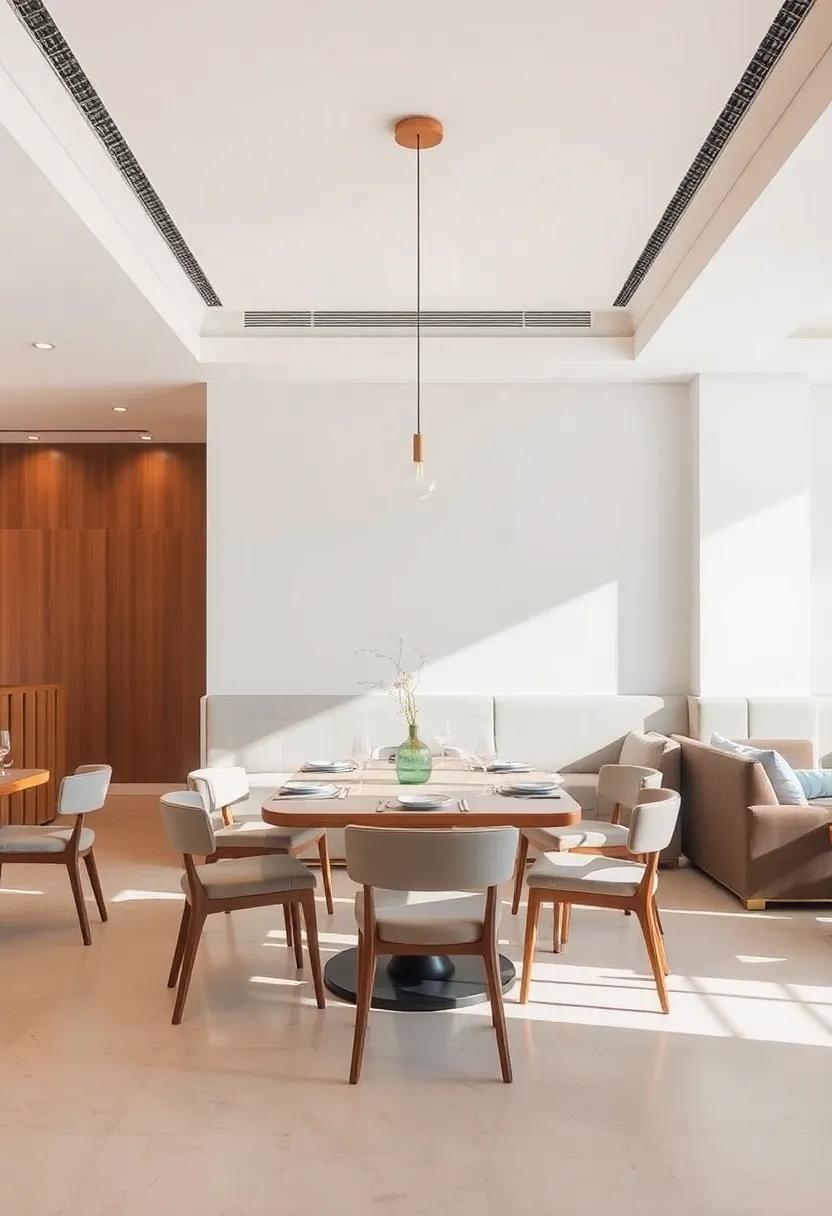
In the world of interior design, textiles play a pivotal role in crafting atmospheres that evoke comfort and intimacy, especially in multi-functional dining areas. By incorporating elements such as tablecloths, cushioned seating, and textured wall hangings, designers can delineate spaces, creating distinct zones for dining, working, or relaxing. Utilizing a cohesive palette of fabrics enriches the visual appeal and enhances the warmth of the environment. As a notable example, a vibrant table runner can act as a focal point, while soft drapes may help to insulate the area acoustically, fostering a sense of privacy and coziness.
The strategic placement of textiles not only adds dimension but also invites personalization. A well-placed area rug can anchor a dining setup, visually separating it from adjacent living spaces. Meanwhile, incorporating throw pillows with varying patterns and textures on dining chairs can turn a utilitarian space into one that feels homely and inviting. by layering these elements thoughtfully, areas can be transformed into welcoming enclaves where family and friends gather, celebrate, or seek respite from the day-to-day hustle.
Showcasing Statement Fixtures: The Role of Lighting in Setting the Ambiance
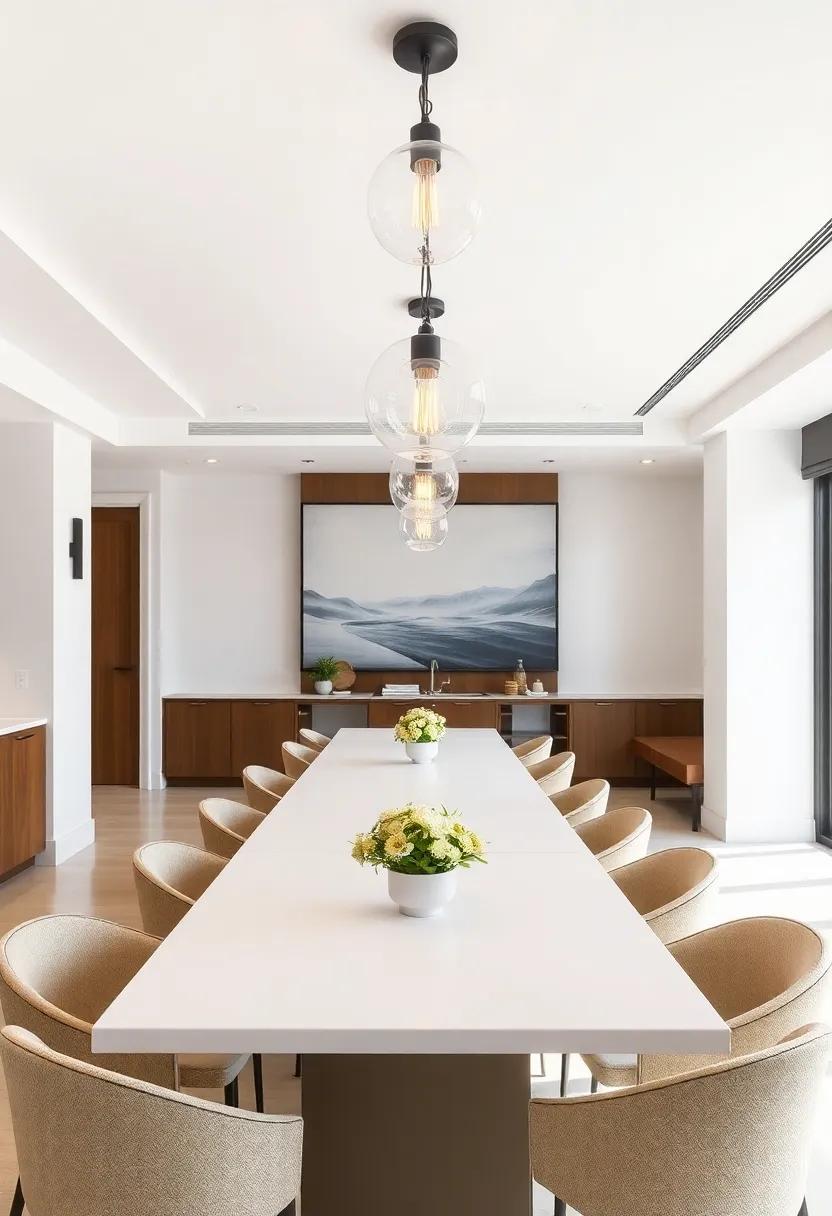
Lighting serves as the unseen artist that shapes the overall ambiance of a dining area, transforming it from a mere eating space into a warm, inviting environment conducive to conversation and connection. In multi-functional dining spaces, where versatility is key, the strategic use of statement fixtures not only illuminates but also captivates. Chandeliers or pendant lights can act as stunning focal points, drawing the eye while enriching the overall design. Choosing fixtures that harmonize with the room’s aesthetic—be it modern, rustic, or eclectic—can help establish a cohesive look that enhances the overall dining experience.
To achieve the perfect balance of light, consider layering various sources—ambient, task, and accent—each serving a purpose while contributing to a holistic atmosphere. Key elements include:
- Dimmer switches: Allow flexibility in brightness, adjusting for formal dinners or casual gatherings.
- Accent lighting: Highlighting artwork or architectural features adds depth and character.
- Natural light: Incorporating large windows or skylights welcomes the outside in, creating a serene backdrop during the day.
Modular Furniture Designs That Adapt to Changing Needs of Dining Areas
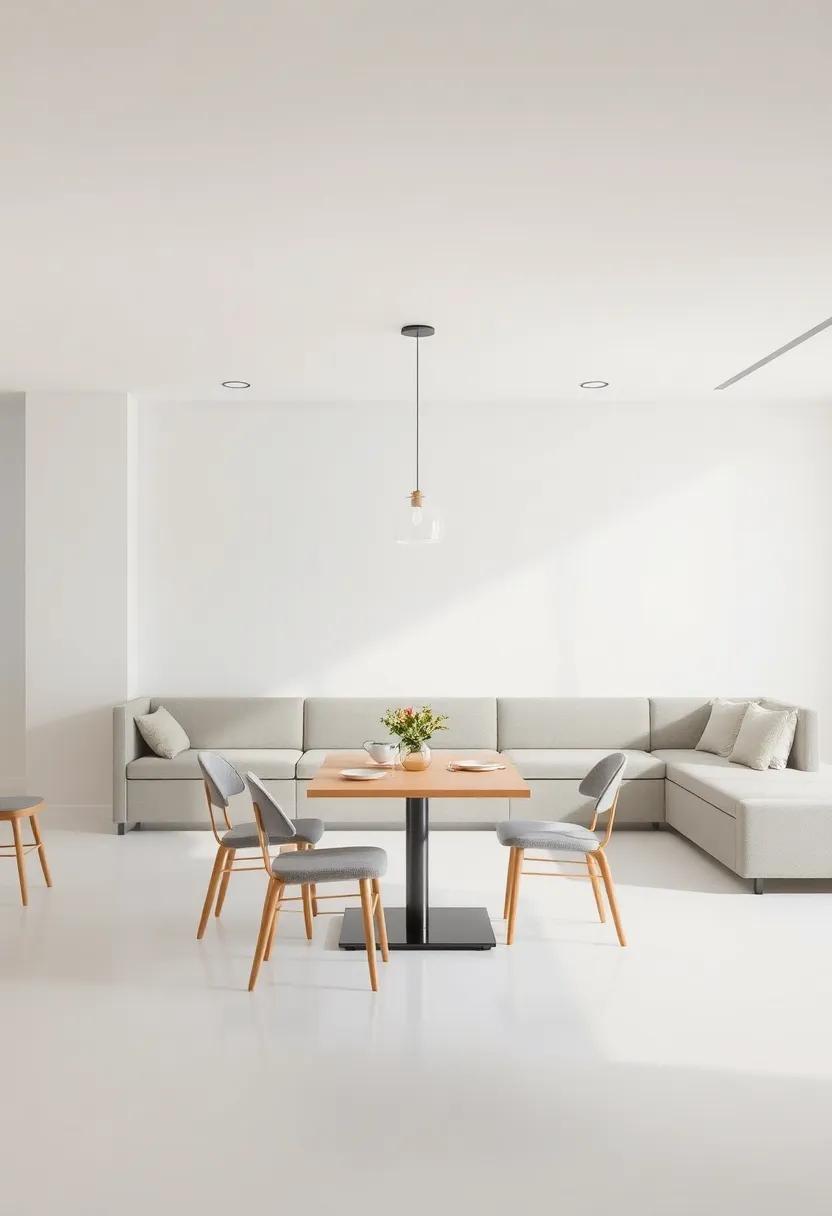
In today’s fast-paced living environments, the demand for flexibility in furniture design has never been greater. Modular furniture pieces enhance dining areas by offering homeowners unparalleled adaptability and functionality. Transform your space with options like extendable tables, stackable chairs, and convertible sideboards, each designed to cater to varying social situations, from intimate dinners to lively family gatherings. The beauty of these designs lies in their ability to easily reconfigure, allowing for seamless transitions throughout the day.
When selecting modular options, consider enhancements that provide not only style but also versatility. For instance, incorporating elements such as built-in storage units or foldable components can maximize space efficiency.Look for designs that feature:
- Customizable layouts that can change with your needs.
- Materials that withstand wear while maintaining aesthetic appeal.
- Integrated technology, like charging ports or ambient lighting.
To further inspire,here’s a rapid overview of popular modular designs:
| Design Feature | Description |
|---|---|
| Extendable Dining Table | Perfect for accommodating guests,extending for larger gatherings. |
| Movable Shelves | Adjustable height and location to adapt to changing decor. |
| Stackable Seating | Space-saving design that allows for easy storage when not in use. |
The Balance Between Aesthetics and Functionality in Modern Dining Area Designs
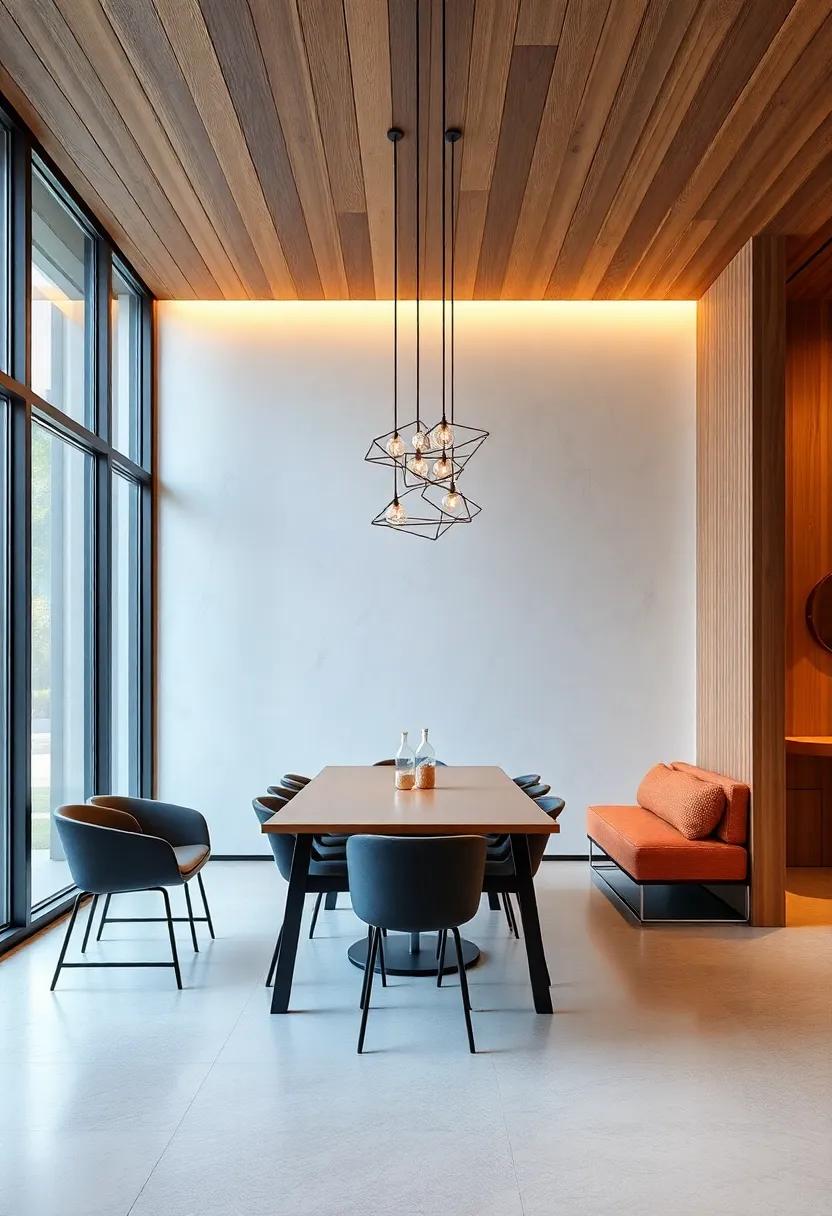
In the evolving landscape of interior design, the modern dining area embraces a refreshing blend of aesthetics and functionality. as more homes prioritize open layouts, these spaces are becoming integral hubs for family gatherings and culinary experiences. The challenge lies in creating an environment that is visually appealing while offering practical usability. Designers frequently enough achieve this through a variety of strategies,such as incorporating multitasking furniture pieces that adapt to both formal dining and casual lounging. Features like expandable tables and modular seating can enhance flexibility while maintaining an elegant appearance.
Moreover, color schemes, textures, and lighting play a pivotal role in harmonizing beauty and utility. Thoughtful combinations can create an inviting atmosphere without compromising on practicality. Consider implementing the following elements to strike the perfect balance:
- Layered Lighting: Utilize a mix of pendant lights, sconces, and natural illumination for mood setting.
- Natural Materials: Integrate wood or stone elements to add warmth and durability.
- Smart Storage: Concealed cabinets or elegant shelving can declutter while enhancing style.
Additionally, color and patterns can be used strategically to reflect personal taste while ensuring that the space remains functional for everyday use.Below is a simple table that illustrates how diffrent elements influence the overall design:
| Element | Functionality | Aesthetics |
|---|---|---|
| Seating | Comfortable & adaptable | Stylish & eye-catching |
| Table | Space-efficient | Elegant design |
| Lighting | Adjustable for different occasions | Enhances ambiance |
Innovative Storage Solutions to Maximize Space Without Sacrificing Style
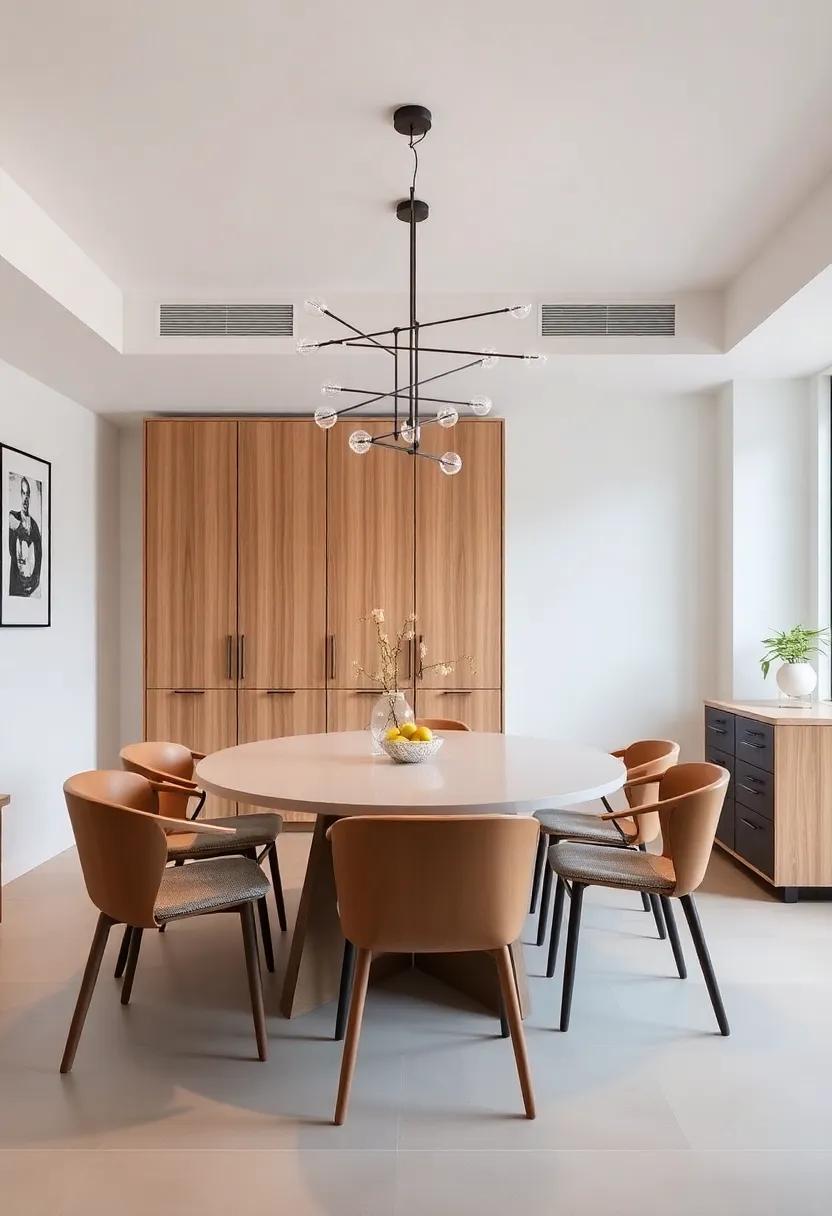
Transforming your dining area into a multifunctional space involves smart storage solutions that complement your aesthetic while enhancing usability. Consider incorporating built-in benches with hidden compartments, offering seating and storage in one seamless design. Sleek, rolling carts can serve as stylish sideboards or movable bars, allowing flexibility for entertaining guests, while wall-mounted shelves keep essentials organized without infringing on floor space. These options not only optimize storage but also infuse traditional dining spaces with creativity.
In addition to practical furniture choices, take advantage of vertical space with hanging racks for wine glasses or pots and pans. Investing in extendable dining tables can dramatically change the room’s functionality, accommodating intimate dinners as well as large gatherings. Pair these ideas with decorative storage boxes or baskets to maintain a clean look while ensuring everything has it’s place.The goal is to create a harmonious environment where style and functionality coexist, turning your dining area into a true reflection of modern living.
Color Psychology: How It Shapes the Dining Experience and Enhances Gatherings
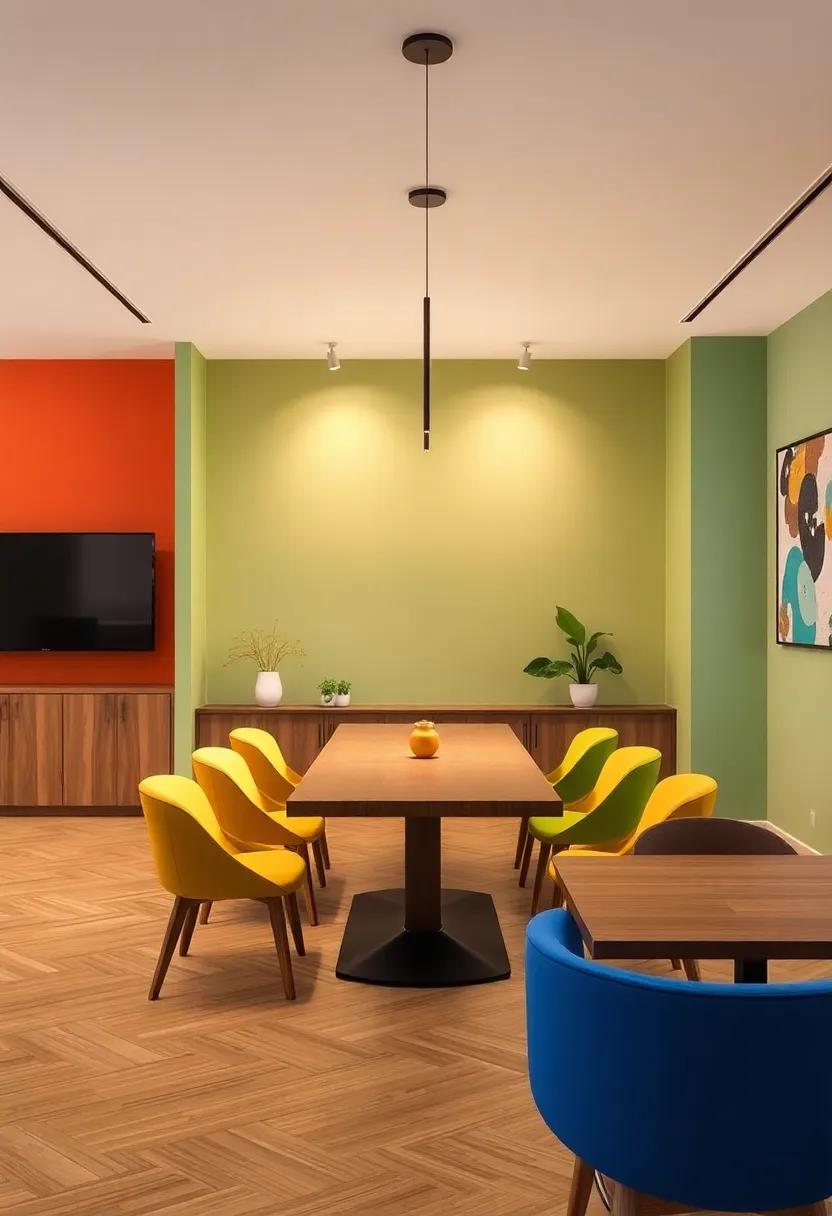
Color plays a pivotal role in establishing the ambiance of any dining area, influencing moods and interactions among guests. Warm hues, such as reds and <strong-oranges, can stimulate appetite and foster a lively atmosphere, making them ideal choices for social gatherings. In contrast, cooler shades like blues and <strong-greens can evoke calmness and relaxation, perfect for more intimate dinners. These colors not only define the space visually but also shape the emotional experience of diners, prompting conversations and camaraderie.
When designing multi-functional dining areas, the integration of color psychology can enhance versatility and ensure a seamless transition between different uses.As a notable example, incorporating a palette of neutral base tones can create a timeless backdrop for the dining space, while allowing for bursts of bold color through accessories and artwork. Consider the following elements to create an inviting atmosphere:
- Accent Walls: Use bold colors on a single wall to create a focal point.
- Table Settings: Choose colorful dishware to add vibrancy and interest.
- Lighting: Incorporate warm lighting to soften harsh colors and enhance comfort.
| Color | Effect | Best For |
|---|---|---|
| red | Stimulates appetite and conversation | Social gatherings |
| Blue | Calms nerves and promotes relaxation | Intimate dinners |
| Yellow | Encourages happiness and optimism | Family meals |
| Green | Promotes balance and harmony | Everyday dining |
Creating Cozy Nooks: Intimate Spaces Within Larger Dining Areas for Personal Connections
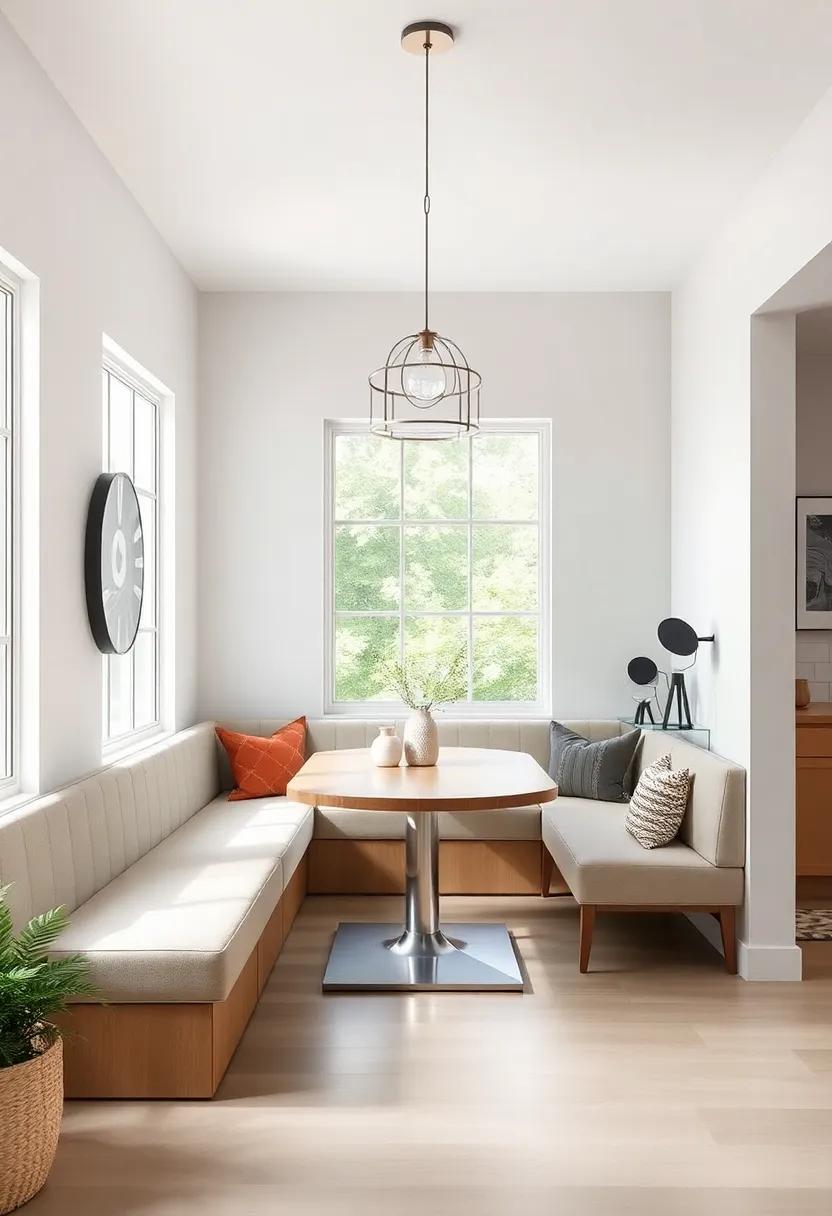
To create inviting and intimate spaces within a larger dining area, consider incorporating elements that evoke warmth and familiarity. A few thoughtful design choices can transform a typical dining setup into cozy nooks ideal for personal connections. Start by utilizing soft lighting,which can be achieved through string lights or strategically placed lamps,to create an ambiance that feels both welcoming and peaceful. additionally,integrating comfortable seating options such as plush chairs or cushioned benches can invite guests to linger longer,fostering deeper conversations and connections.
Another effective way to craft these intimate pockets is by adding privacy screens or dividers that subtly delineate areas without isolating them completely. Incorporating elements like textured textiles—think throw pillows, blankets, or table runners—also adds layers of comfort and style.Consider simply structured subareas where small groups can gather,equipped with miniature tables that facilitate easy sharing of food and stories,making the overall dining experience feel more personal. Below is a table summarizing key features to consider when designing these cozy nooks:
| Feature | Benefit |
|---|---|
| Soft Lighting | Creates a warm and inviting atmosphere. |
| Comfortable Seating | Encourages guests to relax and engage. |
| Privacy Screens | Defines spaces while maintaining openness. |
| Textured Textiles | Adds warmth and visual interest. |
| Miniature Tables | Facilitates easy sharing and interaction. |
Seamless Integration of Technology in Dining Spaces for an Enhanced Experience
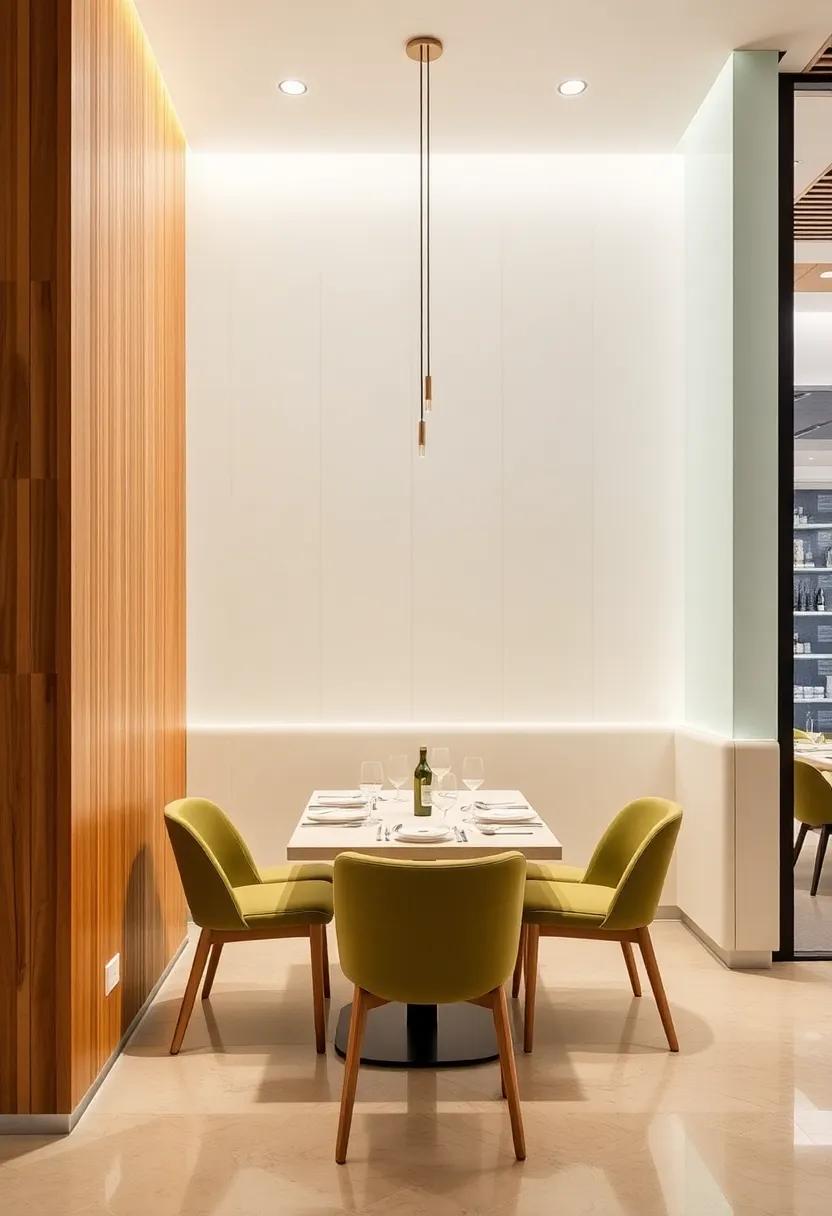
The evolution of dining spaces into multi-functional areas has been largely driven by the seamless integration of technology, creating a dining experience that goes beyond mere sustenance. With the incorporation of smart lighting and automated sound systems, hosts can tailor their environment to suit various occasions—be it a cozy family dinner or a lively gathering with friends. The use of augmented reality menus not only dazzles guests but also allows chefs to showcase their culinary creations in a visually engaging format. These advances encourage an atmosphere where dining becomes an immersive social experience, enhancing interaction and connection among guests.
Moreover, technology simplifies the logistics of dining management. From reservation systems that streamline bookings to interactive tables that allow for easy ordering and payment, the emphasis is on convenience and efficiency. consider implementing a smart kitchen management system that allows for real-time inventory tracking and meal preparation updates. The following table illustrates some essential technological features for modern dining spaces:
| feature | Description |
|---|---|
| Smart Lighting | Customizable ambiance to enhance mood. |
| AR Menus | Engaging visual presentations of dishes. |
| Reservation Systems | Effortless booking and guest management. |
| Interactive Tables | Easy ordering and payment in real-time. |
Cultural Influences on Dining Area Design: Merging Tradition with Modernity
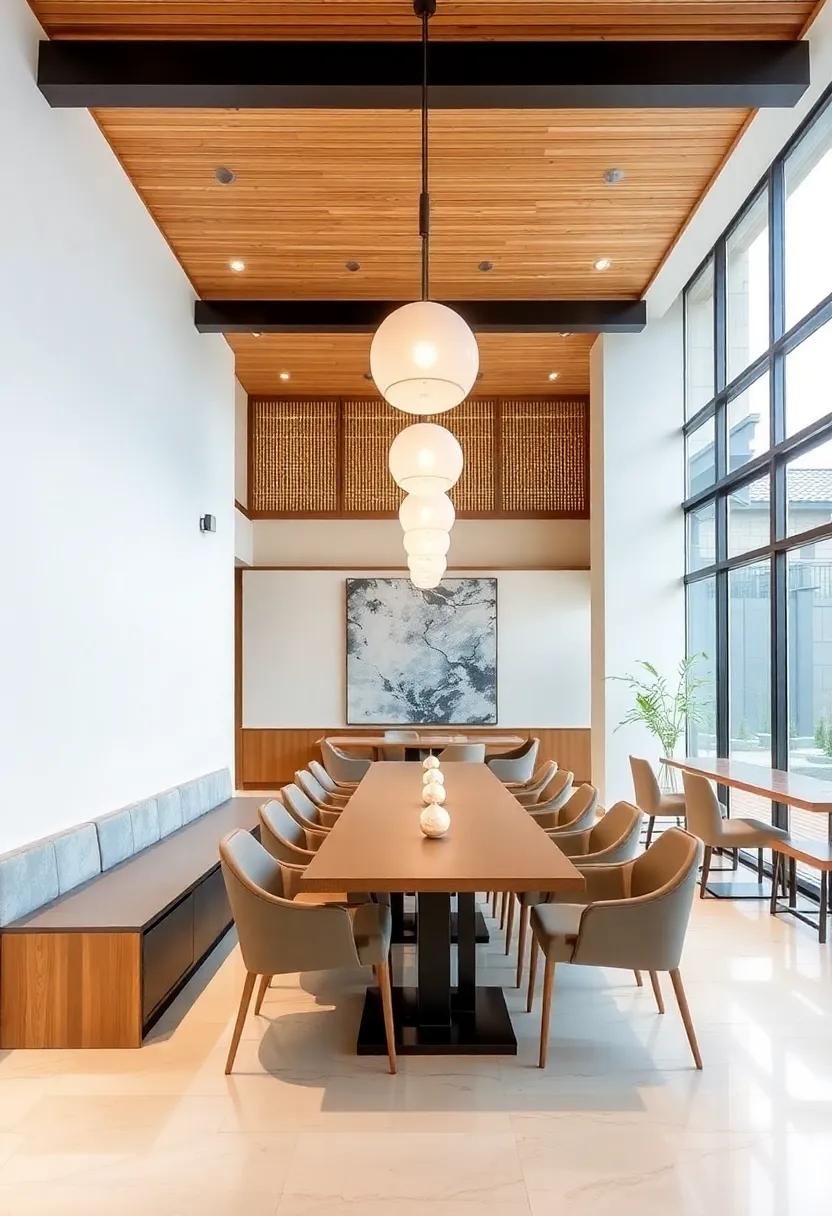
When designing dining areas, the interplay of cultural nuances and contemporary aesthetics creates a unique ambiance that resonates with both tradition and modernity. Global influences frequently enough lead to innovative layouts and design elements that reflect various heritages. For instance, rustic wooden tables from Scandinavian designs can be paired with vibrant textiles inspired by South Asian cultures, fostering not just functionality but also storytelling through decor. Maximizing space becomes crucial in this merger; think about incorporating elements like:
- Multi-purpose furniture: Expandable tables that adapt to guest numbers.
- eclectic tableware: A mix of traditional ceramics with modern minimalist designs.
- Artistic lighting: Chandeliers that blend contemporary shapes with cultural motifs.
Moreover, the color palette in these spaces frequently enough reflects a rich tapestry of cultural significance. Earthy tones common in Mediterranean designs seamlessly incorporate with bold hues found in African art, providing a cohesive yet diverse visual experience. To illustrate the diversity in dining area themes and their cultural inspirations, consider the following:
| Theme | Cultural influence | Design Element |
|---|---|---|
| Rustic Charm | Scandinavian | Wooden accents with minimalist lines |
| Eclectic Fusion | South Asian | Vibrant textiles and colorful ceramics |
| Modern Elegance | Japanese | Sleek designs and nature-inspired elements |
Unique Table Configurations That encourage Interaction and Participation
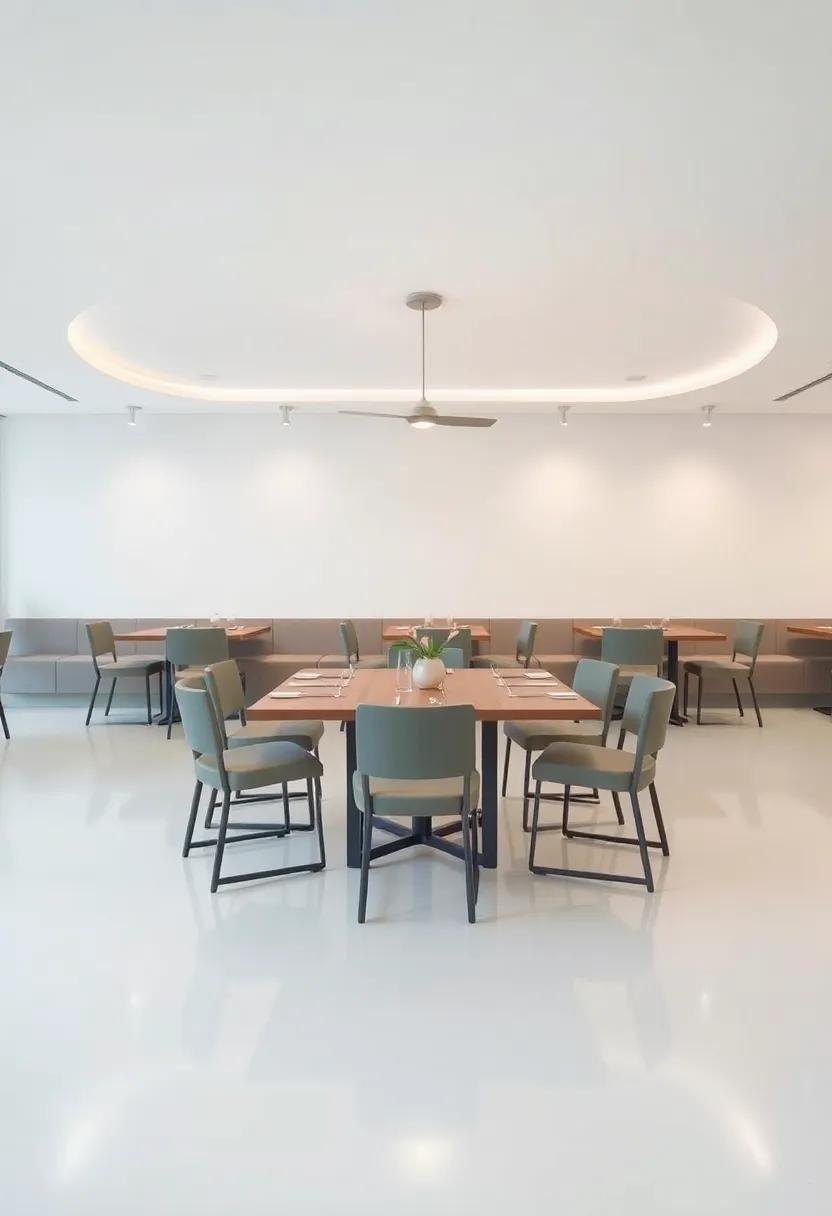
Encouraging interaction and participation in dining areas requires innovative table configurations that break away from conventional layouts. Consider round tables, which naturally foster conversation by allowing everyone to see each other. These tables can be paired with modular seating that can be easily rearranged to accommodate different group sizes. Additionally, incorporating benches or lounge seating around a central table creates a relaxed environment, inviting guests to linger longer and engage more deeply. Another effective option is the U-shaped table, which serves as both a dining space and a platform for shared experiences, perfect for gatherings where collaboration is key.
To enhance the interactive ambiance, integrate movable tables that can be easily repositioned based on the activity or number of guests. Tables that can be clustered together for larger events, or separated for intimate discussions, offer versatility in usage. A well-designed dining area may also include low-rise tables that promote informal seating arrangements, ideal for casual conversations.utilizing multi-level surfaces not only adds visual interest but also encourages creativity and participation, allowing diners to connect over food and ideas across different heights, creating a dynamic atmosphere.
Harmonizing Indoor and Outdoor Spaces for an Expansive Dining Experience
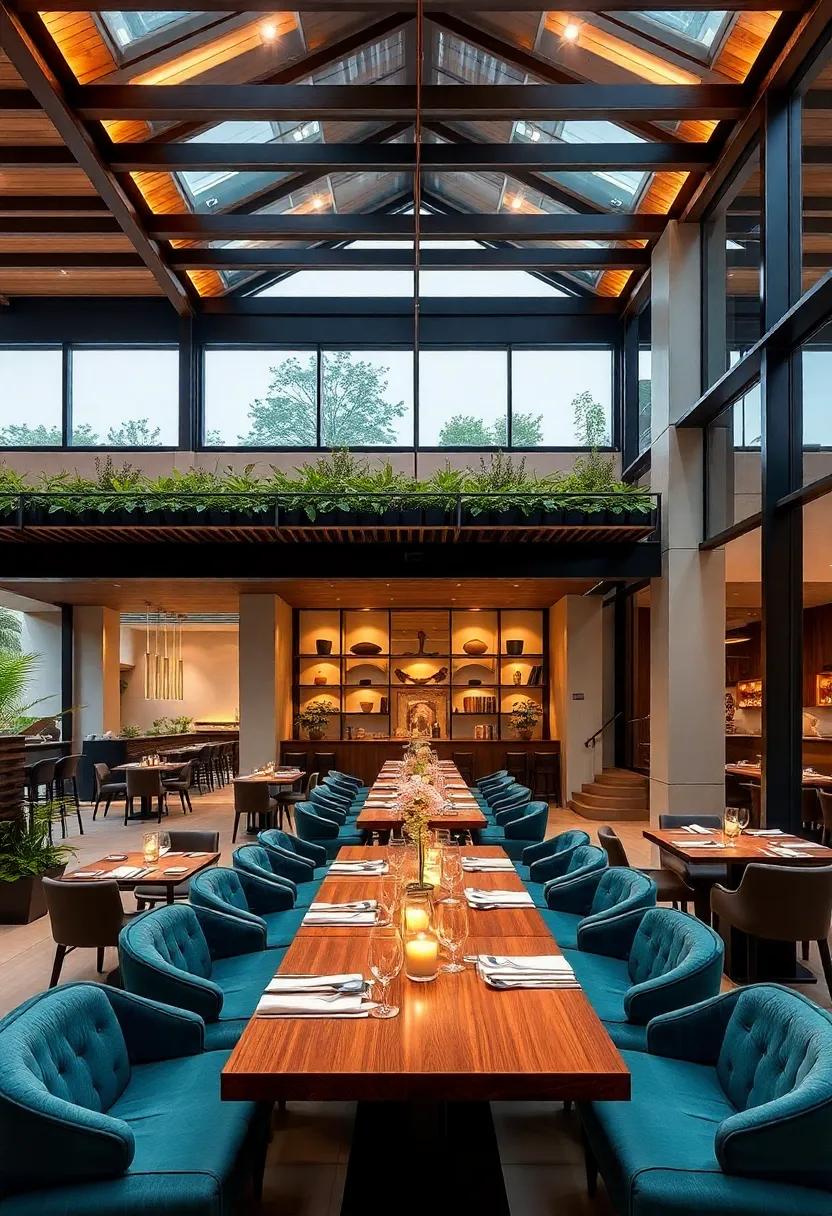
blending indoor and outdoor environments can create an illusion of infinite space, enhancing the dining experience. Consider investing in large glass doors or bi-fold windows that seamlessly connect the two areas,allowing guests to appreciate the views of the outside while enjoying the comfort of indoor amenities. Incorporating consistent color schemes and materials across both settings establishes a visual harmony that ties them together. Use natural elements such as wood,stone,or greenery in both spaces to maintain a cohesive aesthetic; these can include:
- Wooden tables that echo outdoor picnic vibes.
- potted plants that bring the garden indoors.
- Textured fabrics to evoke a rustic feel.
To enhance functionality, consider flexible furniture choices that can easily accommodate both settings. Use stackable chairs or extendable tables to ensure adaptability for various gatherings—whether an intimate dinner or a lively gathering. Utilize design features like a partial roof or awning in outdoor spaces for protection and continuity in use year-round. Below is a simple table illustrating practical design elements for a fluid transition between spaces:
| Design Element | Purpose |
|---|---|
| Sliding Glass Doors | Enhance light and accessibility |
| Unified Color Palette | Create visual continuity |
| Outdoor Lighting | Extend usability into the evening |
| Durable Fabrics | Resist weather while maintaining style |
Artful Wall Treatments That Add Character to Multi-Functional Dining Areas
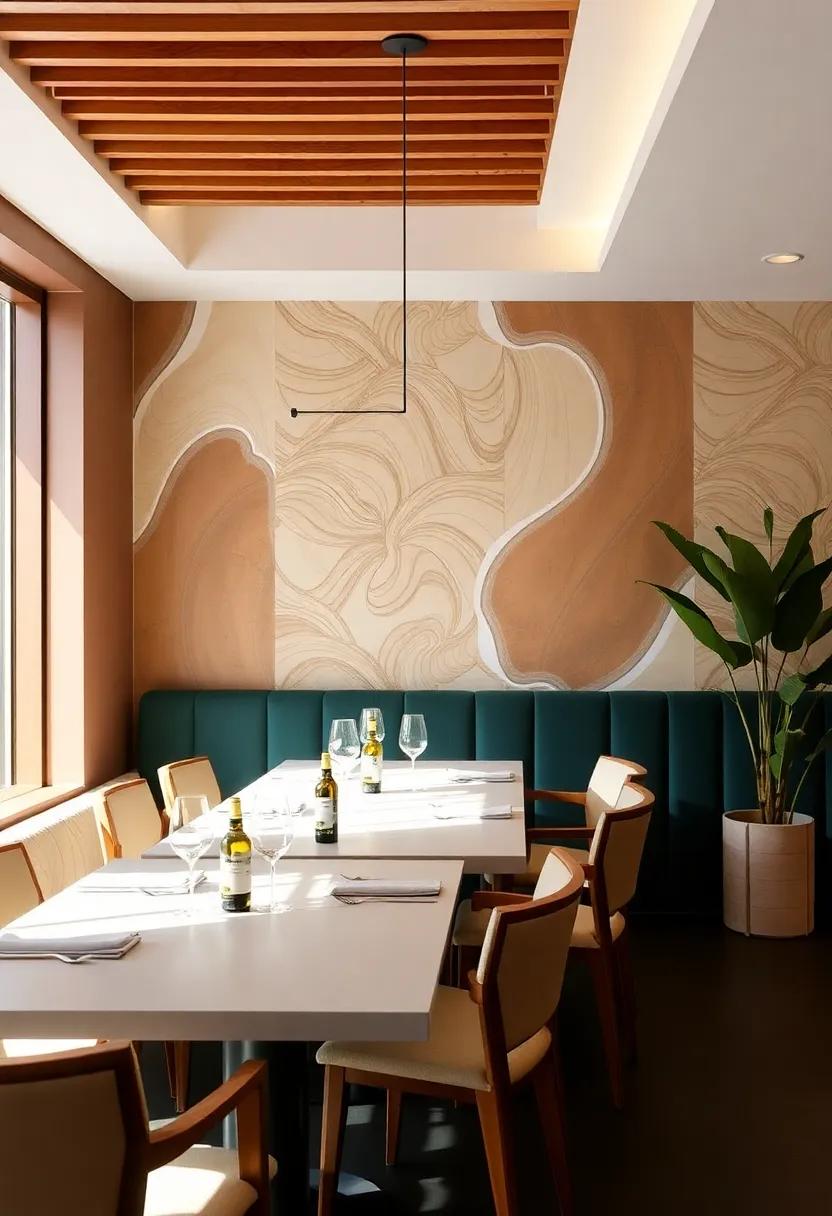
creating a multi-functional dining area offers an exciting opportunity to express individuality through artful wall treatments. By opting for various textures, colors, and patterns, you can turn blank walls into vibrant canvases that reflect your personal style.Consider incorporating statement wallpapers, faux finishes, or even an eclectic gallery wall that showcases family memories and art pieces. These wall treatments not only create a focal point but also enhance the overall ambiance, allowing the space to transition effortlessly from a dining area to a hub for social gatherings.
Utilizing wall treatments that serve both aesthetic and practical purposes can also maximize functionality. For instance, installing floating shelves allows for the display of decorative items while providing storage for everyday essentials. Additionally, using chalkboard paint in designated areas can create a fun spot for jotting down notes or menus, making it a dynamic feature in your multi-functional space. Here’s a simple table to illustrate some popular wall treatment options:
| Wall Treatment | Characteristics | Best For |
|---|---|---|
| Textured Paint | Unique finishes—like sponge, rag, or brushed techniques. | Adding depth to minimalist designs. |
| Peel-and-Stick Wallpaper | Easy to apply and remove; offers a wide variety of designs. | Temporary solutions for a changeable look. |
| Wood Paneling | Rich, warm aesthetics; can be painted or stained. | Creating a rustic or cozy atmosphere. |
| Gallery Wall | A collage of photos, art, and personal mementos. | Personalizing the space and enhancing visual interest. |
Creating Flexible Spaces: Designing for Multi-Purpose Dining and Entertaining
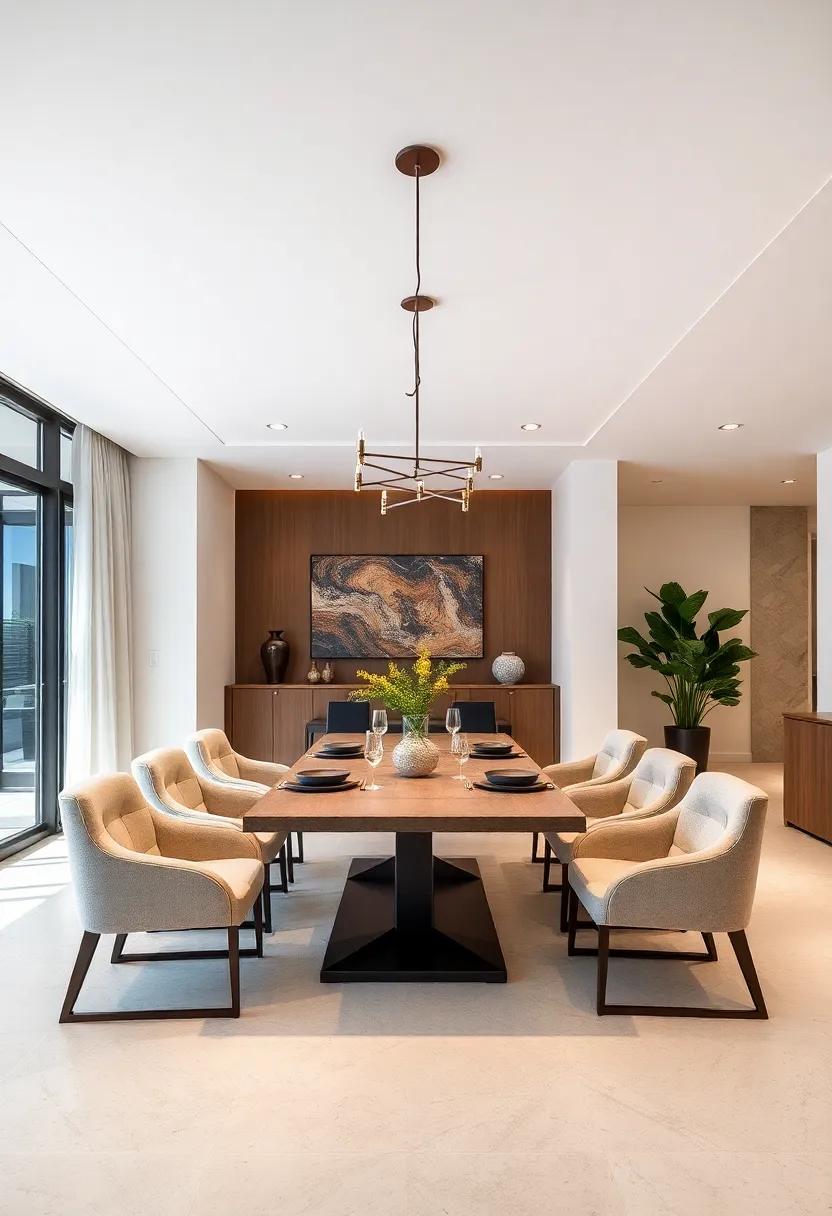
When it comes to designing a dining area that seamlessly transitions from everyday meals to festive gatherings, embracing flexibility is key. A well-thought-out layout can include extendable tables, stackable chairs, and versatile storage solutions that allow for easy conversion. Consider incorporating modular furniture pieces that can be rearranged or reconfigured depending on the occasion.This approach not only maximizes the functional space but also enhances the aesthetic appeal, making the dining area feel inviting and refined.
To maximize the use of the dining space, think creatively about your furnishings. Here are some elements to consider:
- Foldable tables: Ideal for saving space when not in use.
- Statement lighting: A chandelier can elevate a simple meal into a classy affair.
- Open shelving: Perfect for displaying dinnerware and decorative items while providing easy access.
| Furniture Type | Benefits |
|---|---|
| Extendable Dining Table | Accommodates small or large gatherings effortlessly. |
| Benches | Creates a casual vibe and offers flexible seating arrangements. |
| Storage Ottomans | Add seating and storage in one stylish piece. |
Sustainable Materials Choices for a Stylish and Eco-friendly Dining Environment
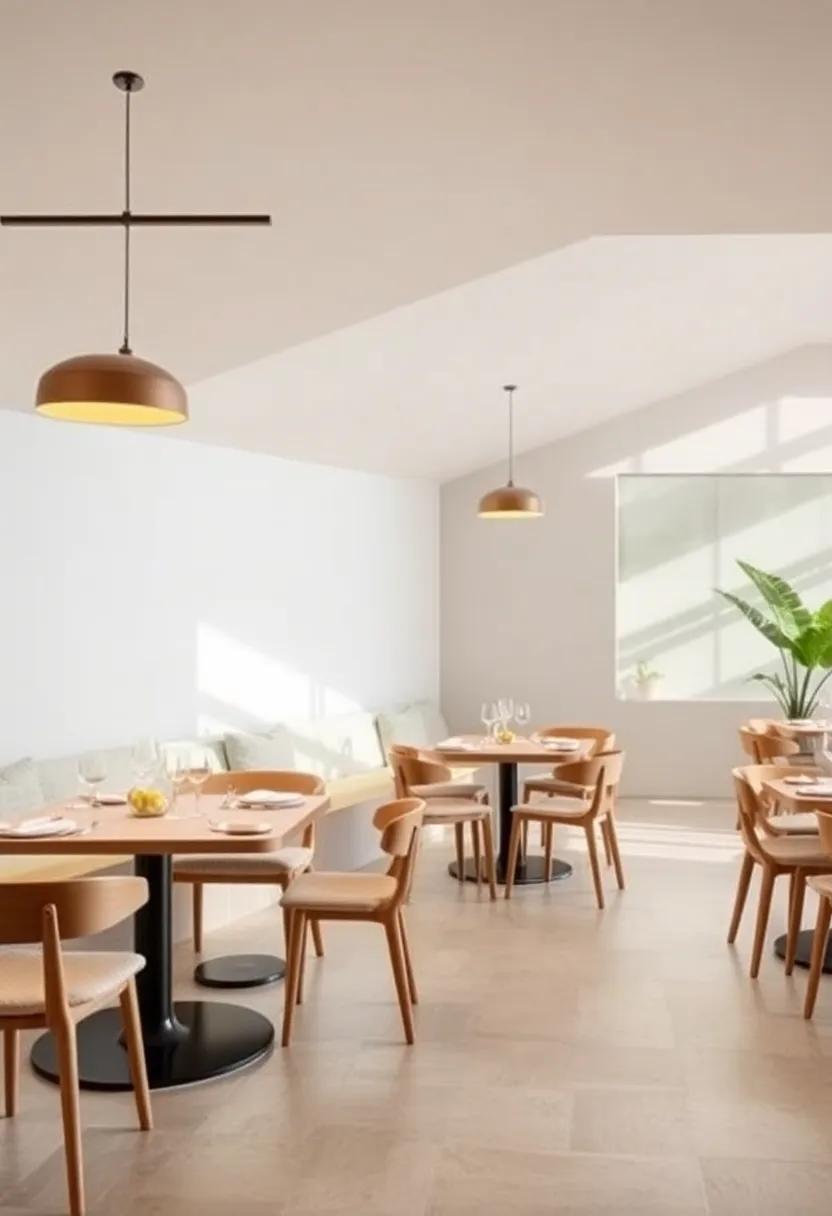
Creating a dining space that blends style with sustainability requires thoughtful selection of materials. Opt for reclaimed wood for tables and chairs, which not only adds character but also reduces the demand for new lumber. Bamboo, known for its quick growth and renewability, serves as an excellent alternative for dining furniture. Additionally, consider cork for flooring or tabletop surfaces as it is indeed biodegradable and harvested from the bark of cork oak trees without harming them. Lastly, use recycled glass for décor items, adding an artistic touch while supporting eco-friendly practices.
To enhance the aesthetic appeal of the dining area, choose textiles crafted from organic cotton, linen, or hemp. these materials are not only stylish but also free from harmful chemicals and pesticides. Incorporating natural dyes ensures that your cushion covers and table runners are vibrant without compromising the environment. For an inviting atmosphere,implement a color palette inspired by nature – earthy tones combined with soft pastels can create a harmonious ambiance. By making these sustainable choices, your dining area can become a showcase of environmental consciousness without sacrificing elegance.
Exploring the Role of Personal Style in Customizing Multi-Functional Dining Spaces
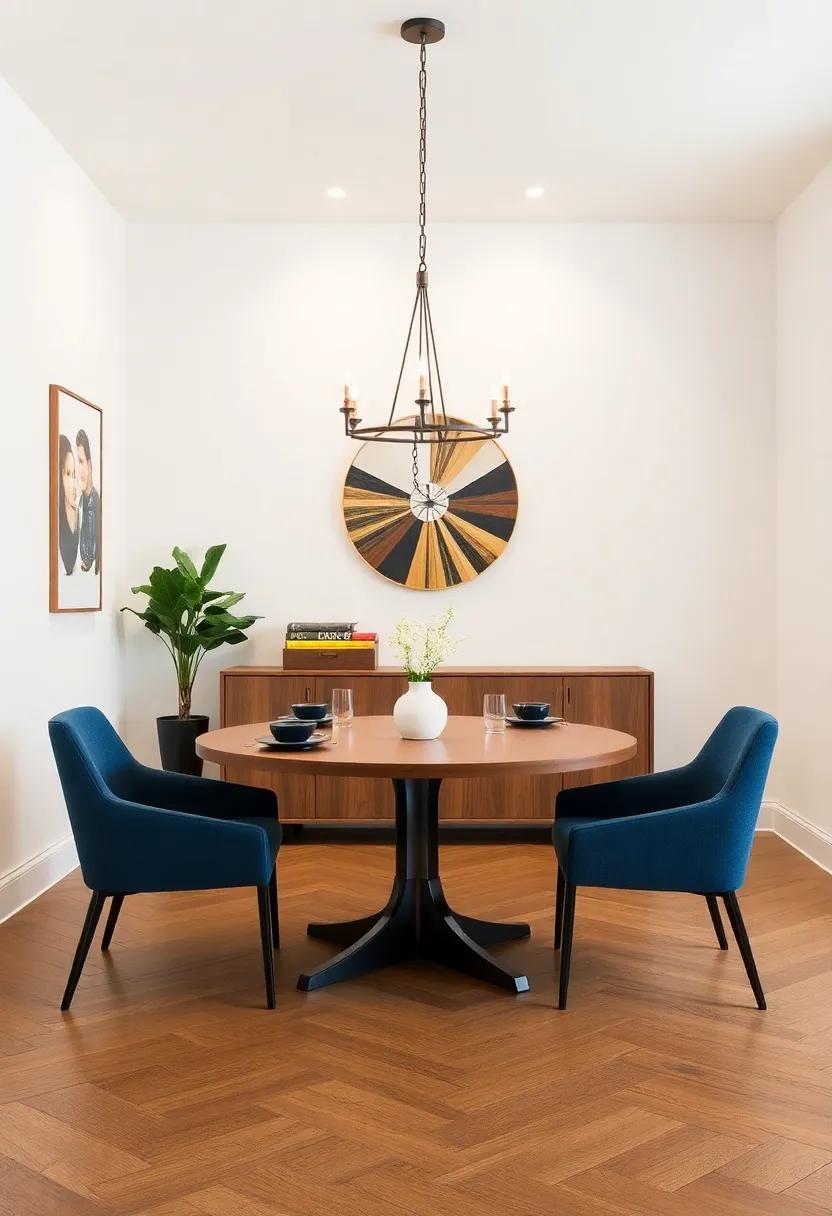
In the realm of multi-functional dining spaces, personal style emerges as a pivotal force, acting as the bridge between functionality and aesthetics. When curating a dining area that serves varied purposes—from hosting intimate dinners to functioning as a workspace—individual tastes should dictate the design elements. Integrating bold colors, textured materials, and unique art pieces can infuse personality into the space, making it distinctly yours while remaining functional. Furthermore, harmonizing these elements with practical furniture choices, such as expandable tables and versatile seating options, ensures that the area transitions smoothly from one use to another, all while reflecting your unique style.
To achieve a perfect balance, consider the following tips to enhance the personalization of your dining space:
- Choose a Theme: Select a cohesive theme that resonates with your personal style.
- incorporate Personal Artifacts: Use decor items like family photos or travel souvenirs.
- Mix and Match: Blend different styles of furniture for an eclectic look.
- Layer Lighting: Combine ambient, task, and accent lighting to create versatile moods.
Additionally, incorporating natural elements can enhance both the look and feel of your dining area. A simple table can be transformed into a center of attention with a well-thought-out centerpiece. Consider using a table that allows for both functionality and elegance.Below is a quick overview of some table styles that can help tailor the dining experience:
| Table Style | Description | Best For |
|---|---|---|
| Farmhouse | Rustic charm with a spacious surface | Family gatherings |
| Expandable | Transformative design for larger groups | Entertaining guests |
| Round | Encourages conversation with intimacy | Small spaces |
| Multi-Level | Offers different heights for diverse activities | Workspace combined with dining |
textures and Layers: Using Materials to Create Depth in Dining Designs
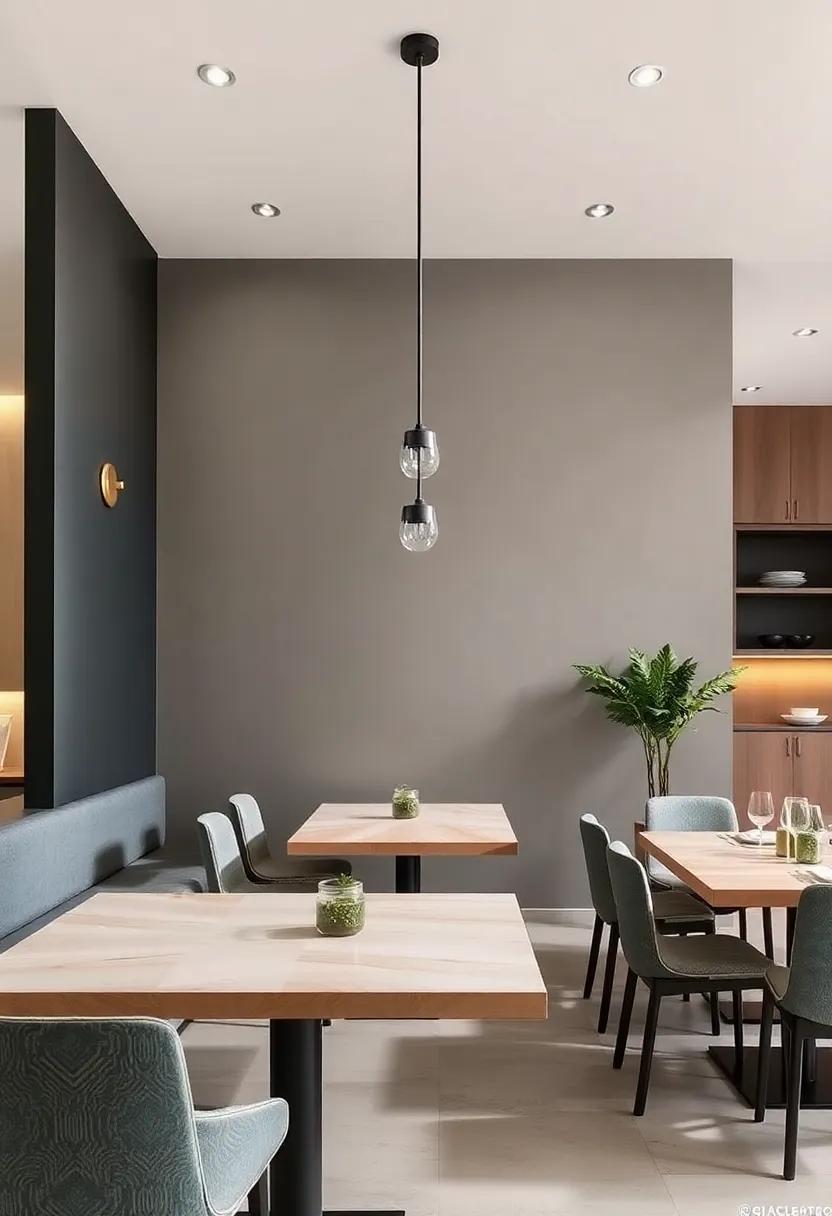
Incorporating a variety of materials is essential to achieving a sense of depth and sophistication in dining area designs. Layering textures can transform an ordinary space into an inviting sanctuary where meals become more than just a routine—they turn into experiences. consider integrating wood, metal, and fabric to create visual intrigue. A wooden dining table can serve as a warm foundation, while metal chairs might introduce a modern edge. To add softness and comfort, plush cushions or a beautifully draped tablecloth can enhance the tactile dynamics of the space.
When selecting materials, think about how they interact with one another to tell a story. As an example, pairing matte finishes with glossy accents can create a striking contrast. Use the following elements to deepen the design:
- Textured table runners: They can break the monotony of flat surfaces.
- Natural elements: Incorporate stoneware or ceramics that add an organic flair.
- A statement centerpiece: Opt for layered arrangements using flowers, fruits, or decorative objects.
Exploring these material combinations not only enhances visual appeal but also fosters a multi-functional environment where style coexists with comfort. When curated thoughtfully, your dining space can seamlessly transition from casual family dinners to elegant gatherings.
The Influence of Layout on Social Engagement in Dining Spaces
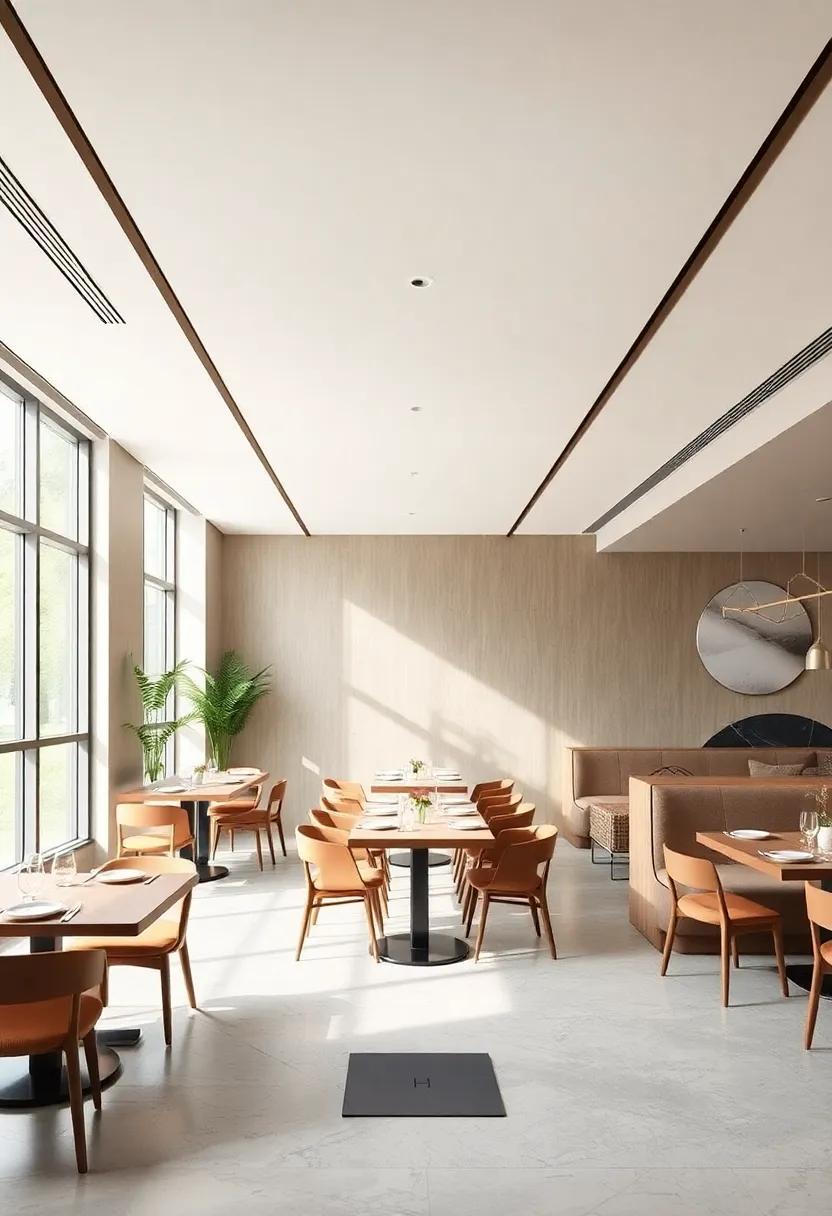
The arrangement of furniture and the overall flow of a dining space play a crucial role in fostering social connections and encouraging interaction among guests. For instance, using round tables can promote inclusivity and make conversations less formal, while linear setups might cater more to intimate gatherings. Designers often utilize varied focal points, such as community tables or cozy nooks, to invite different kinds of social engagement. When elements like lighting and acoustics are thoughtfully integrated, they further enhance the atmosphere, making people feel comfortable and at ease while dining.
Exploring the impact of layout on social dynamics, consider the following aspects:
- Spatial Arrangement: Open layouts typically facilitate mingling, whereas segmented areas can create distinct moods for groups.
- Purposeful Zoning: Designating areas for different activities—like eating, chatting, or relaxing—encourages a fluid experience.
- Accessibility: Ensuring paths are clear allows for smooth movement, making it easier for guests to engage with one another.
The table below highlights various dining layouts and their social impacts:
| Layout Type | Social Impact |
|---|---|
| Round Tables | Encourages inclusivity and easy conversation |
| Long Banquets | Fosters larger gatherings, can feel impersonal |
| Curated Nooks | Cultivates intimate and deeper connections |
Infusing Playfulness into Design: fun Accessories For vibrant Dining Areas
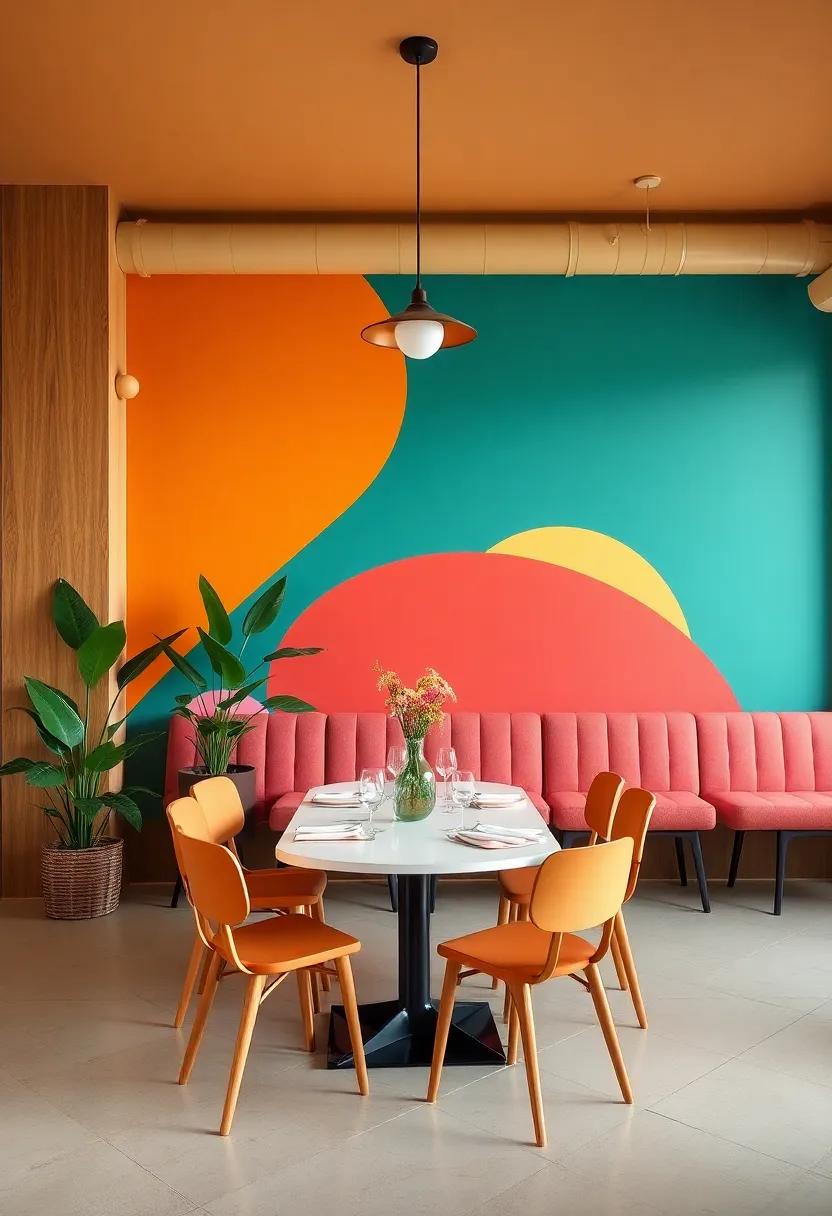
Injecting a dose of playfulness into dining spaces not only enhances their aesthetic appeal but also fosters a lively dining atmosphere. Consider accessories that celebrate color and whimsy, such as quirky tableware or decorative centerpieces. These elements can transform a standard meal into a delightful experience. Here are a few playful additions to consider:
- Brightly Colored Utensils: Choose cutlery in non-traditional shades to enliven the table setting.
- Patterns and Textures: Use table linens with fun designs that stimulate the senses.
- Whimsical Table Decor: Incorporate playful items like miniature sculptures or themed salt and pepper shakers.
Creating a vibrant dining area means blending functionality with creativity. Opt for pieces that can serve multiple purposes while still bringing joy to the table. As an example, foldable chairs with colorful upholstery can add comfort and ease of storage. Furthermore, investing in a dynamic table runner can anchor the aesthetic while being functional for food presentation. Here’s a quick overview of accessory options that strike a balance between fun and utility:
| accessory | Functionality | Playful element |
|---|---|---|
| Colorful Tablecloth | Protects the table surface | Radiant patterns enhance mood |
| Unique Serving Platters | Serves food artistically | Fun shapes and colors |
| Novelty Drink Coasters | Protects surfaces from spills | Whimsical designs spark conversation |
Highlighting functional decor: Essentials that Enhance the Dining Experience
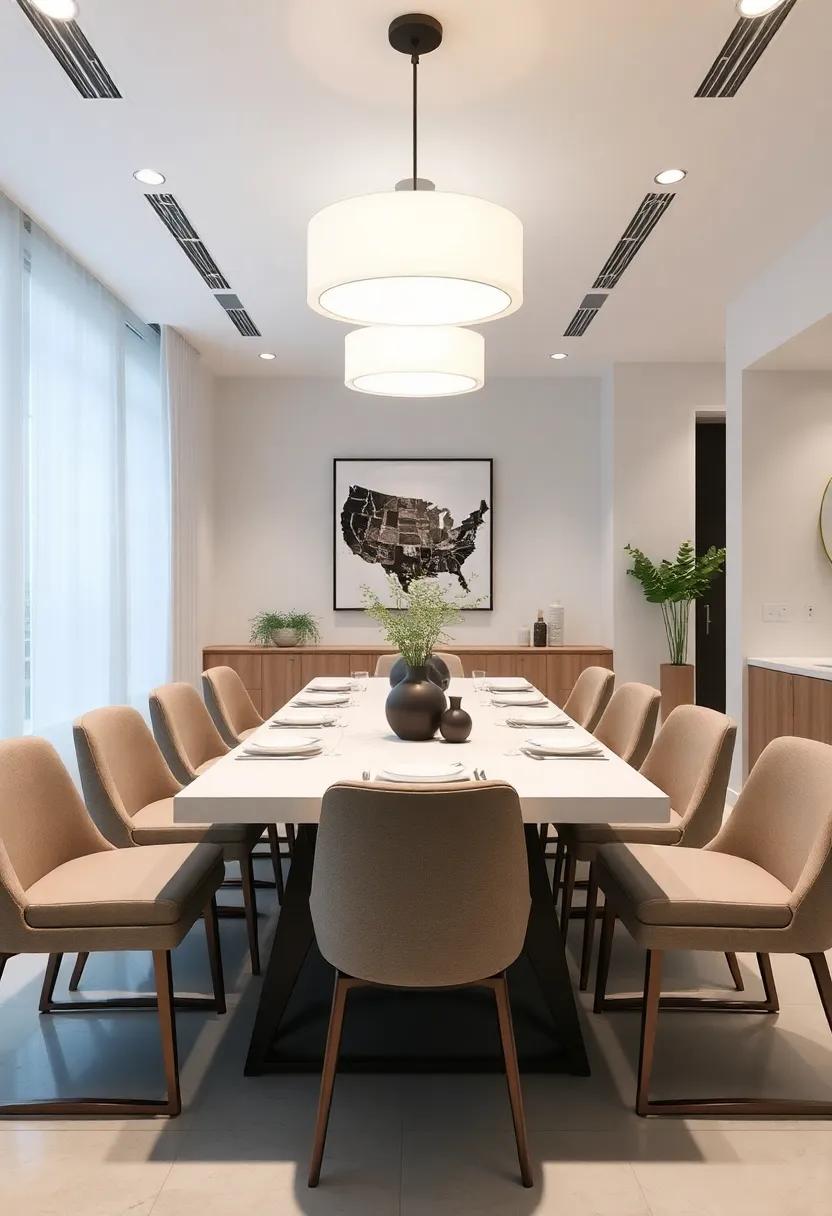
Creating a dining space that is both functional and aesthetically pleasing is key to enhancing the at-home dining experience. Consider incorporating pieces that serve multiple purposes, such as a beautifully designed sideboard that not only provides storage but also doubles as a serving area during gatherings. One can also opt for extendable dining tables that adjust to accommodate both intimate family meals and larger events, ensuring versatility without compromising on style. Here are some essential items to consider:
- Multi-functional Sideboards: Elegant and practical, they keep dining essentials organized.
- Extendable Tables: Adapt easily to different group sizes for various occasions.
- Stylish Stools: Offer additional seating while enhancing the décor with their unique designs.
Lighting plays a significant role in setting the mood and can also serve functional purposes. As a notable example, pendant lights above the dining table not only illuminate the space but can also serve as eye-catching focal points. Consider layering your lighting with adjustable fixtures that allow for a range of atmospheres, from casual breakfasts to formal dinners. Furthermore, utilizing tableware that combines aesthetics with utility—like beautifully crafted serving platters that are designed for both display and use—can elevate your dining setup. here are some highlights:
- pendant Lighting: Enhances ambiance and provides essential task lighting.
- decorative Serving Ware: Merges practicality with design,creating a cohesive look.
- Table Linens: Adds warmth and texture while protecting surfaces.
The Journey of Transformation: Before and After Spaces of Multi-Functional Dining
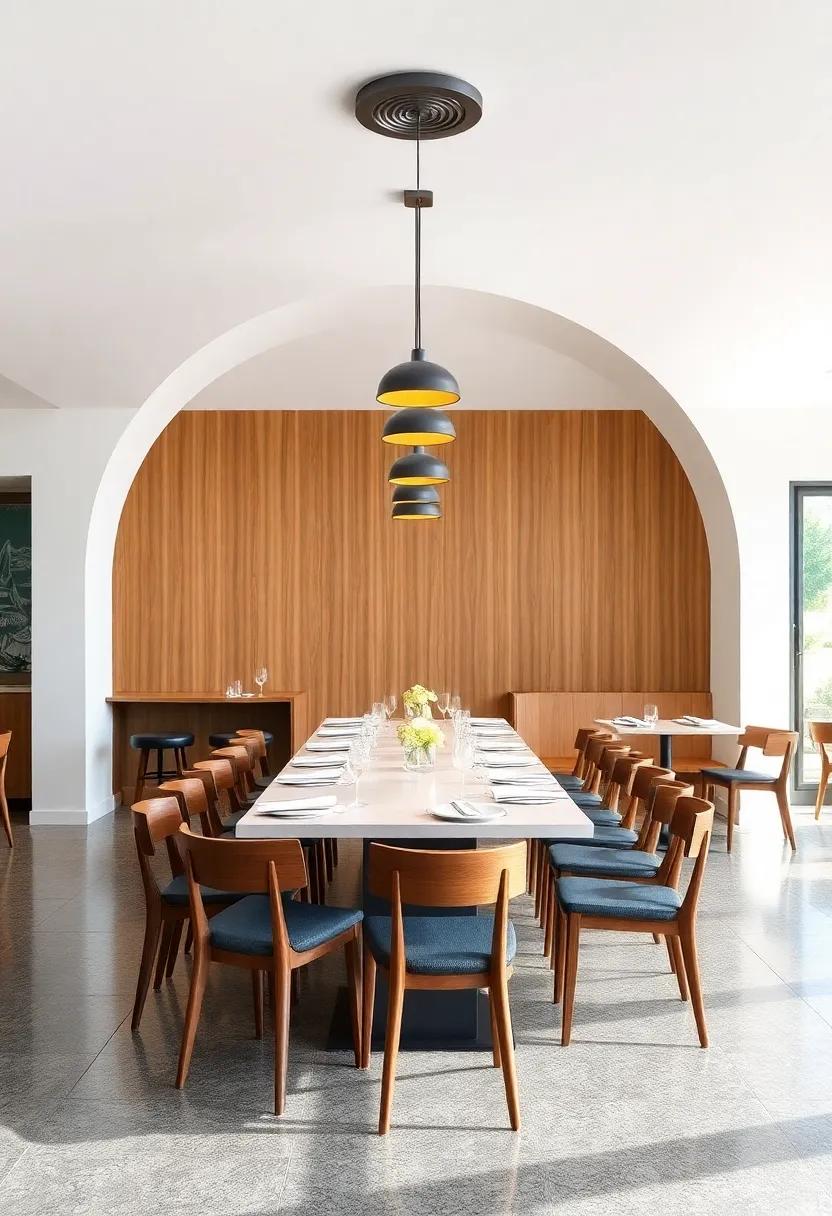
Transforming a traditional dining space into a multi-functional area is an art that redefines the essence of home living. Before the metamorphosis, these spaces frequently enough served a singular purpose, confining gatherings to formal dining experiences. Though, the journey of transformation introduces innovative ideas that allow the room to flex and adapt, making it suitable for various daily activities. consider the integration of elements such as:
- Versatile furniture: Folding tables and extendable dining sets that adapt to the occasion.
- Storage solutions: Hidden compartments that keep the space organized while maintaining an open feel.
- Multi-use decor: art pieces that serve as both aesthetics and functional elements, like a stylish bench that doubles as seating.
The transformation process culminates in an inviting and dynamic environment where family meals, casual gatherings, and even remote work can seamlessly coexist. Post-transformation,the space thrives on its ability to cater to diverse needs,fostering connections and enhancing comfort. A well-designed multi-functional dining area often features:
| Key Features | Benefits |
|---|---|
| Flexible Layout | Encourages creativity in how the space is used. |
| Layered lighting | sets the mood for different activities throughout the day. |
| Access to Technology | Supports work-life balance with integrated tech solutions. |
Celebrating cultural Heritage Through dining Area Design Choices

Incorporating cultural heritage into dining area design is an enriching way to celebrate the stories, traditions, and artistry of diverse communities.each element, from tableware to furniture, offers an opportunity to evoke a sense of place and history. As a notable example, integrating handcrafted ceramics and textiles can serve as a bridge to the past, allowing individuals to connect with ancestral roots. consider the following approaches to create a dining space that resonates with cultural significance:
- Artisanal Tableware: Use local ceramics and glassware as conversation starters.
- Textiles: Adorn the table with vibrant woven fabrics or traditional tapestries.
- Color Palette: Choose colors that reflect a specific culture, enhancing the overall ambiance.
Additionally, the layout and design of the dining area can mirror cultural rituals and communal dining practices. Think about creating an inviting, open space that encourages gatherings, reminiscent of traditional feasting tables. Implementing multi-functional furniture allows for versatility while maintaining a connection to heritage. A well-thought-out arrangement could include:
| Design Element | cultural Reference |
|---|---|
| Round Table | Symbolizes unity and inclusiveness in many cultures. |
| Low Seating | Reflects traditional dining styles in Asian cultures. |
| Sharing Platters | Sparking communal eating experiences. |
Spatial Flow and movement: Encouraging Interaction in Large Dining Settings
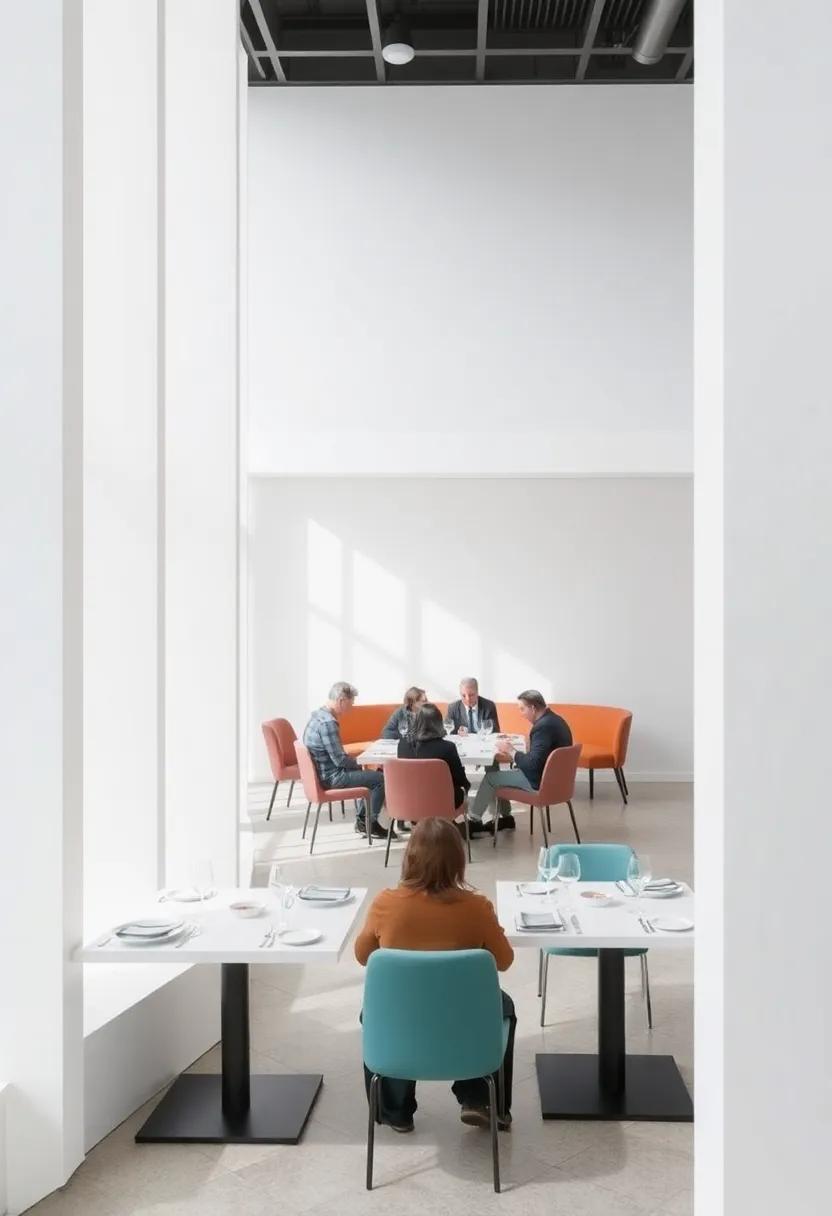
In crafting an inviting atmosphere for large dining spaces, the spatial flow plays a crucial role. Designing pathways that encourage social interaction can be achieved by organizing tables into smaller clusters rather than setting out long, linear rows.This arrangement allows guests to move freely while engaging with one another.Consider incorporating various seating options, such as communal tables, cozy nooks, and intimate booths, to cater to diverse dining preferences and enhance the sense of connection among guests. A well-planned layout that promotes movement can significantly enrich the dining experience.
Moreover, integrating elements that facilitate natural movement can create a dynamic environment. Features like open aisles, designated areas for small gatherings, and strategically placed serving stations promote circulation and foster a sociable atmosphere. Accent details such as decorative pathways or visual cues can guide guests seamlessly throughout the space. Below is a simple reference table illustrating various design elements that enhance interaction in large dining settings:
| Design Element | Functionality |
|---|---|
| Clustered Seating | Encourages conversation and connection. |
| Open Aisles | Facilitates easy movement and accessibility. |
| Communal Tables | Invites guests to interact with strangers. |
| Visual Cues | Guides flow and enhances navigation. |
The Art of Centerpieces: Creating Focal Points That Spark Conversation
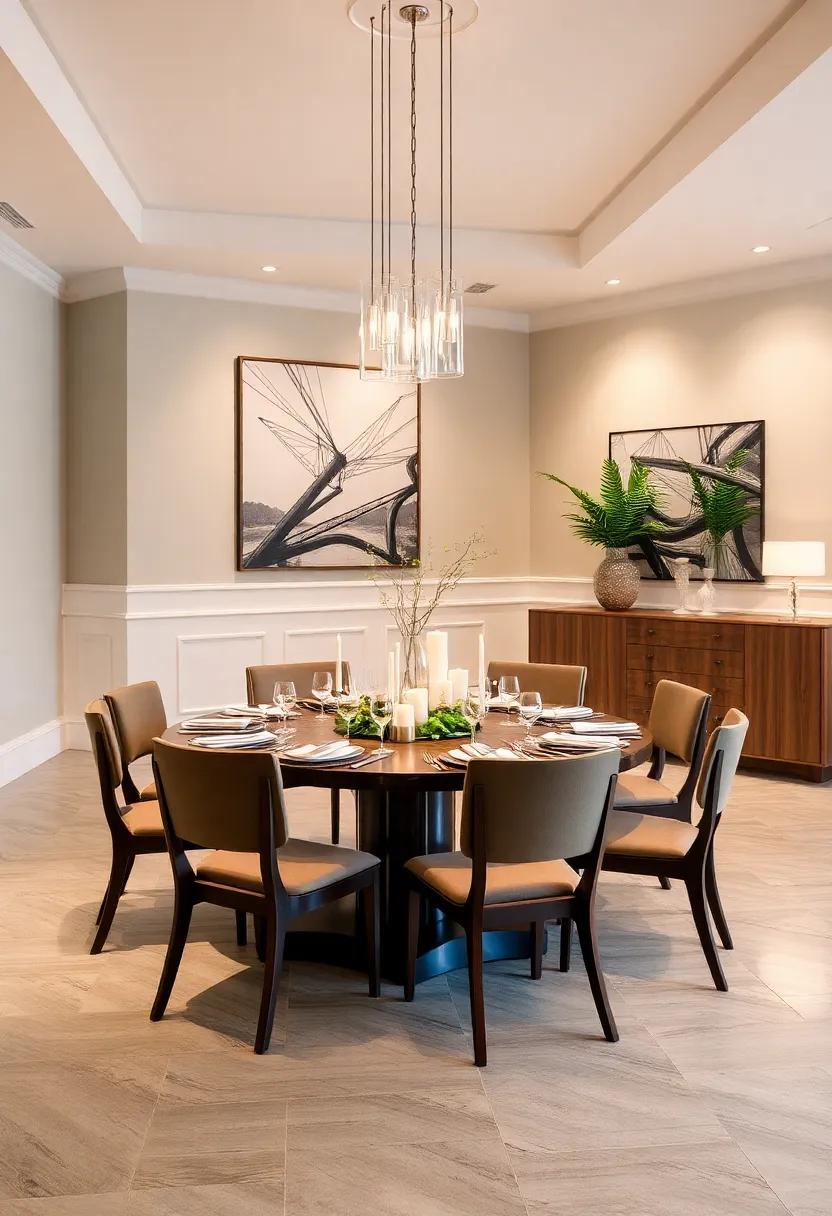
In any dining area, a stunning centerpiece can serve as a conversation starter, effortlessly guiding the flow of social interaction. Emphasizing texture and color can transform an ordinary table into a visual feast. Consider these ideas to ignite creativity in your centerpiece design:
- seasonal Arrangements: Utilize flowers, fruits, or vegetables that reflect the current season.
- Layered Textures: Combine materials such as glass, wood, and fabric to create depth.
- Thematic Elements: Incorporate items that reflect the occasion or a shared interest among guests.
moreover, incorporating varying heights in your centerpiece can enhance visual interest and draw the gaze around the dining area. for instance, using a combination of tall candlesticks, low floral arrangements, and sculptural pieces can add dimension.Here’s a simple layout for the arrangement of elements:
| Element | Height | Material |
| Candlesticks | Tall | Glass |
| Floral Arrangement | Medium | Fabric and Fresh Flowers |
| Sculptural Piece | Short | Ceramic |
Crafting a centerpiece that marries aesthetics with functionality can also stimulate discourse. By thoughtfully choosing components that reflect personal stories or cultural heritage, your table becomes a canvas inviting tales and shared laughter, turning every meal into a memorable occasion.
Designing for Seasons: Adapting Dining Areas Throughout the Year
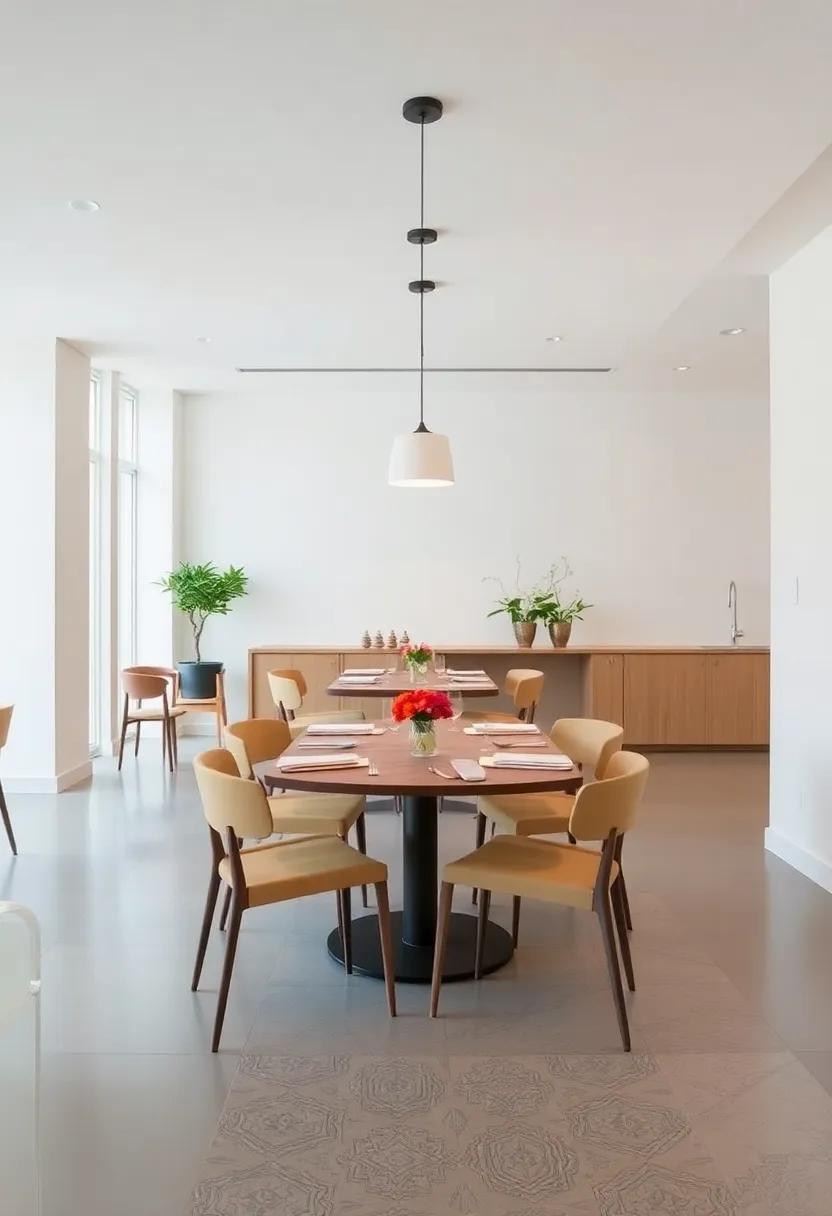
Embracing the changing seasons offers an exciting opportunity to refresh dining areas, turning them into spaces that resonate with the mood of the moment. During the warmer months, consider incorporating light fabrics and vibrant colors that reflect a sense of freshness and energy.Utilize outdoor elements, such as wicker or bamboo furniture, and adorn tables with floral centerpieces that bring nature indoors. In colder seasons, opt for warmer tones and cozy textiles, like velvet or wool, that create a sense of intimacy.Candlelight can enhance the ambiance, making the space feel inviting and snug when the weather outside is less than welcoming.
To seamlessly transition between seasons without overwhelming changes, think about the following adaptable elements:
- Removable textiles: Use table linens and cushions that can be easily swapped out.
- Seasonal decor: Create a rotation of centerpieces, such as pumpkins in fall or seashells in summer.
- Multi-functional furniture: Choose pieces that can serve multiple purposes, like extendable tables or stackable chairs.
Here is a concise overview of key elements to include when designing your multi-functional dining area:
| Season | Key Elements |
|---|---|
| Spring | floral Prints, Light Colors |
| Summer | Outdoor Furniture, Bright Accents |
| Autumn | Warm Tones, Rustic Decor |
| Winter | Cozy Textiles, Candlelight |
Key Takeaways
As we draw the curtain on our exploration of multi-functional dining areas, it becomes clear that the art of design transcends mere aesthetics. These spaces are a reflection of our evolving lifestyles, where the boundaries of dining, working, and gathering have blurred. By embracing creativity and flexibility, we can transform our homes into harmonious sanctuaries that cater to both everyday routines and special occasions.
Whether it’s a cozy nook for intimate dinners or a spacious area for hosting lively gatherings, the possibilities are as limitless as your inventiveness. As you embark on your own design journey, remember that each thoughtful detail contributes to a story—a narrative that celebrates connection, functionality, and the joy of coming together.
So, as you consider your dining space, think beyond the table and chairs. Envision a canvas ready to adapt, to inspire, and to nurture the moments that matter most. Happy designing!
 Decorationg Interior Design
Decorationg Interior Design
